Imagine you’re looking for after shave oil.
You type a few keywords into Amazon. A brand called Truly Beauty pops up. You’ve never heard of them.
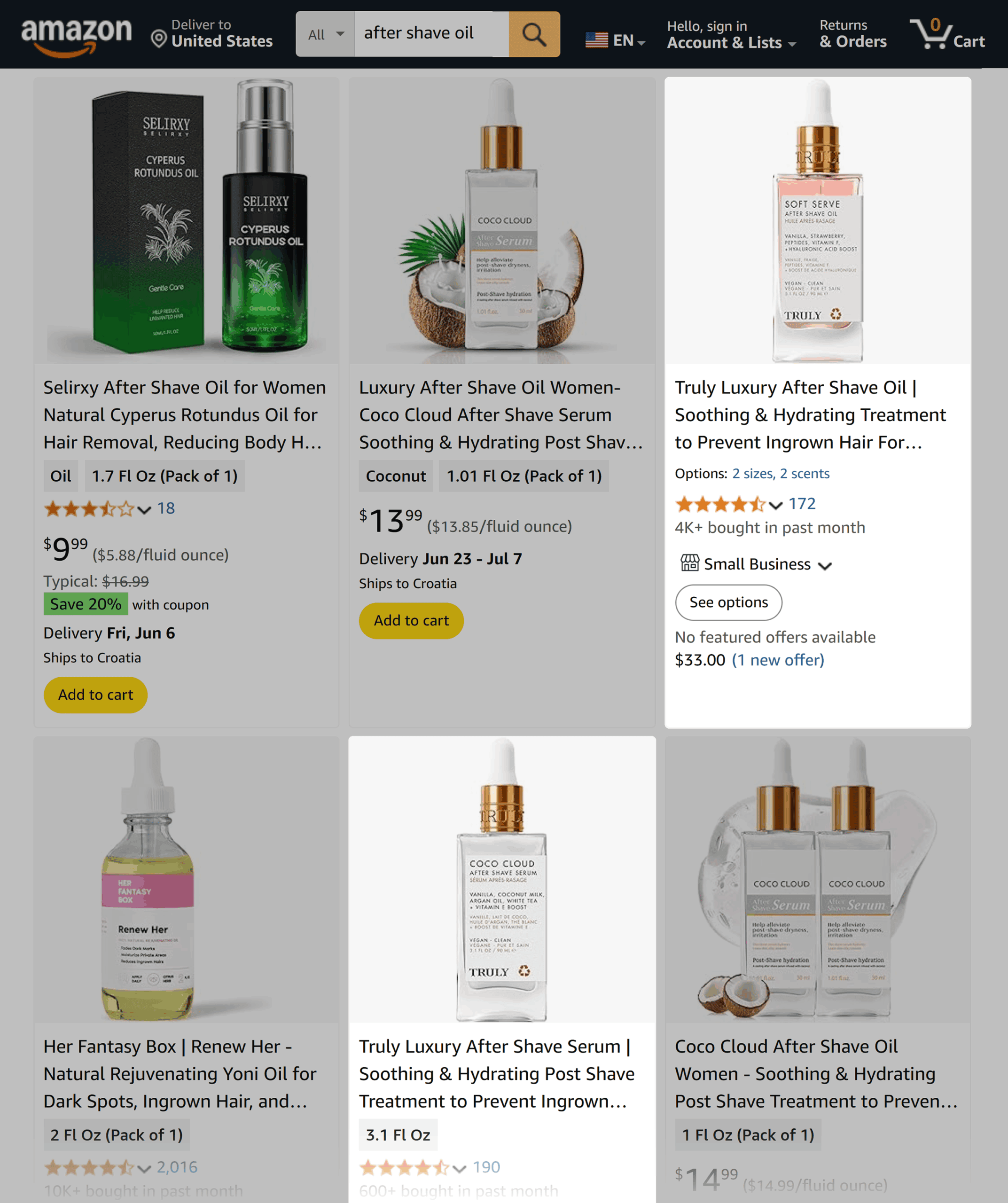
So you go to YouTube to find the “best after shave oil”.
At the top of the results, someone has reviewed Truly Beauty’s product.
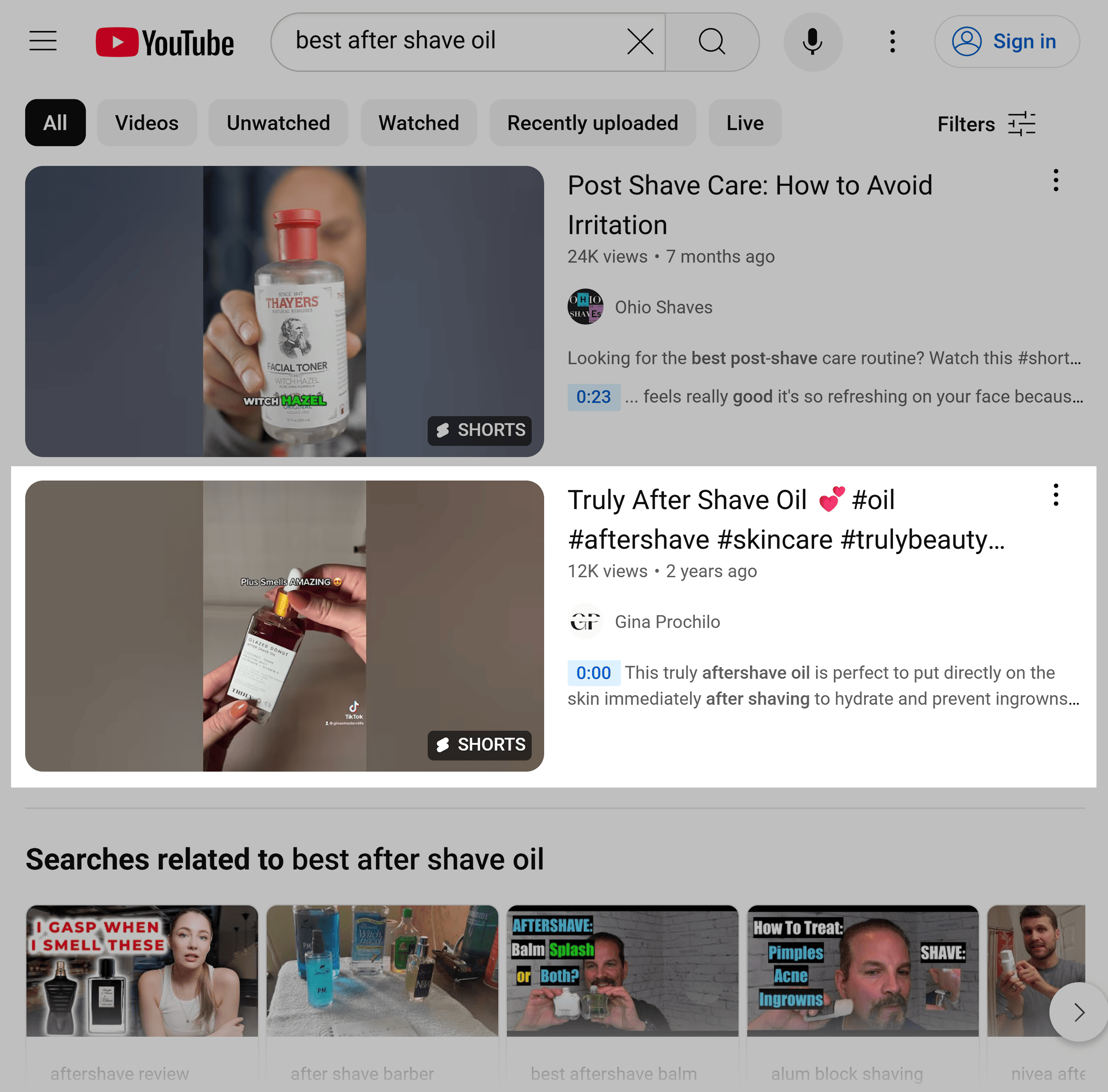
Okay, interesting…
Let’s stay on YouTube. Next, you type “truly beauty after shave oil” into the search.
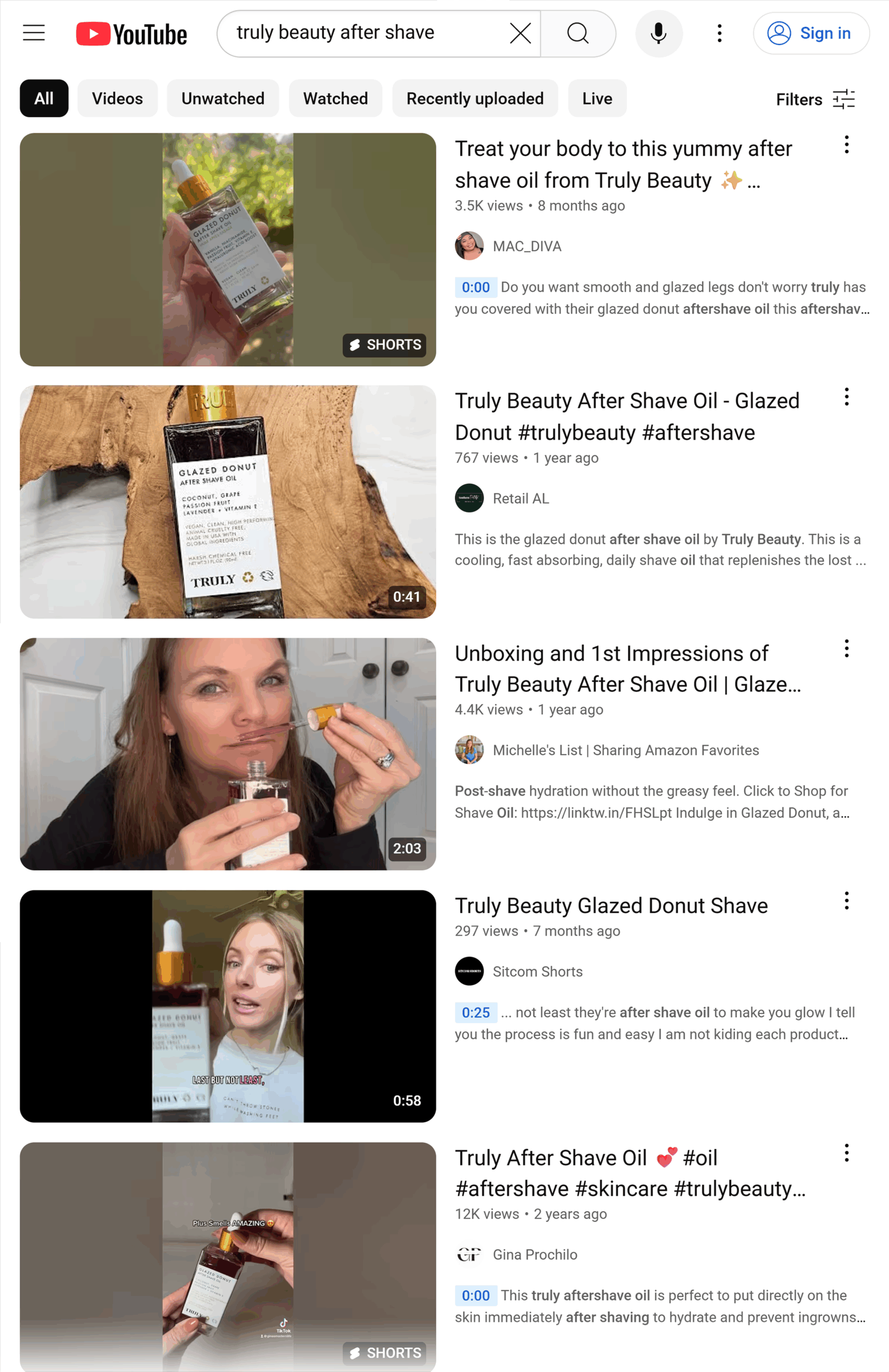
What the? The whole page has people reviewing Truly Beauty products!
Is this brand legitimate, or are all these ads in disguise?
Time to go to Reddit to get some unfiltered opinions.
You search for “after shave oil reviews reddit” and notice that once again, Truly Beauty shows up in the results.

Sure enough, other people share your skepticism. But there’s some positive feedback too.
You decide to give them a try.
This kind of journey happens millions of times every day — across every industry, on every platform.
Side note: I run a men’s apparel brand, but I often research women’s beauty. It’s insanely competitive and usually way ahead in digital strategy.
If you’re in SEO, there’s a clear takeaway here:
You’re not just optimizing for Google anymore.
You need to show up across the entire decision-making journey. Wherever your audience searches, scrolls, or compares.
This is exactly what Truly Beauty figured out.
They didn’t just optimize for Google. They built visibility across the entire search ecosystem. Amazon for discovery. YouTube for social proof. Reddit for authentic reviews.
And it’s working amazingly well.
In this guide, I’ll break down how to optimize your brand for how people actually search today. With concrete examples. Including Truly Beauty’s strategy.
Free resource: To make things easier, I’ve created a checklist to track your progress
Let’s start with what’s really happening here.
The New Reality: Search Everywhere Optimization
What Truly Beauty did isn’t luck. It’s strategy.
They understood something most brands still miss:
Search has changed.
Today’s customers don’t follow a clean, Google-only path. They bounce from TikTok to YouTube, Reddit to Amazon, back to Google, then maybe ChatGPT for one last check.
Credit where it’s due: Rand Fishkin captured this evolution perfectly in his recent post.
Search Everywhere Optimization is about helping people find, evaluate, and trust your brand across every platform where discovery happens. That includes Google — but also YouTube, TikTok, Reddit, Amazon, LinkedIn, and even AI tools like ChatGPT.
Every one of those platforms can shape a decision. Miss one? You risk losing the customer to someone who showed up where you didn’t.
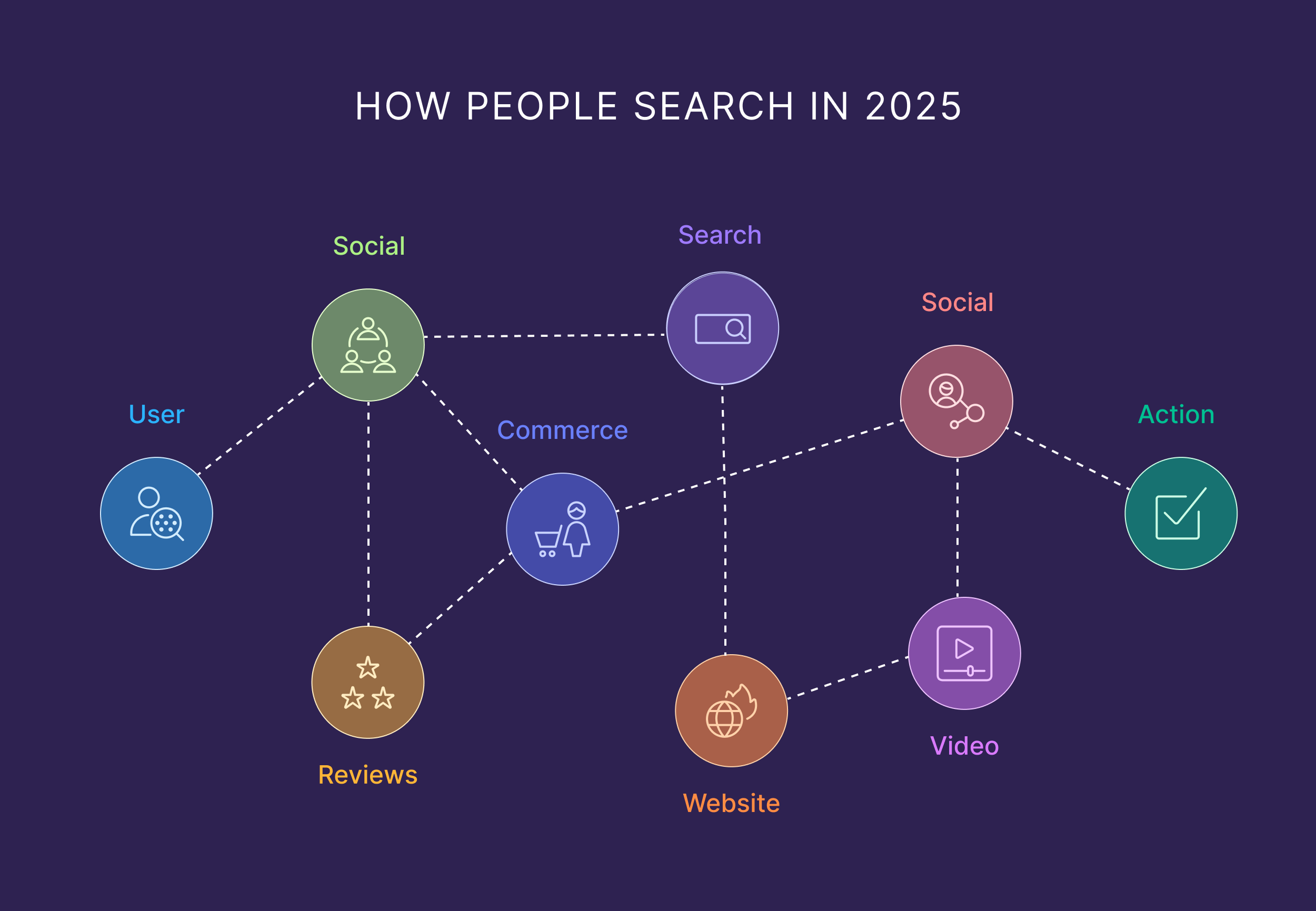
Your job isn’t just to rank on Google.
It’s to help people find, evaluate, and trust your brand everywhere they search.
Some call this omnichannel SEO, cross-platform optimization, AEO (Answer Engine Optimization), or GEO (Generative Engine Optimization).
The way I see it:
Search Everywhere Optimization.
Because the search journey now includes everything from YouTube Shorts to AI summaries.
And your job is to build visibility, credibility, and conversion power across it all.
It’s not just about being found.
It’s about being trusted. On every platform where decisions happen.
That’s what makes Search Everywhere Optimization different — it evolves SEO beyond a siloed tactic into a full-funnel growth strategy.
So, you’re not just optimizing pages anymore.
You’re shaping how people find, evaluate, and trust what you offer across every stage of the journey, on every platform they turn to for answers.
Done right, Search Everywhere Optimization helps you:
- Show up on high-engagement platforms where decisions start
- Create content that resonates in the right format and context
- Build trust through experience — design, messaging, and credibility
- Turn search moments into conversions, leads, or long-term users
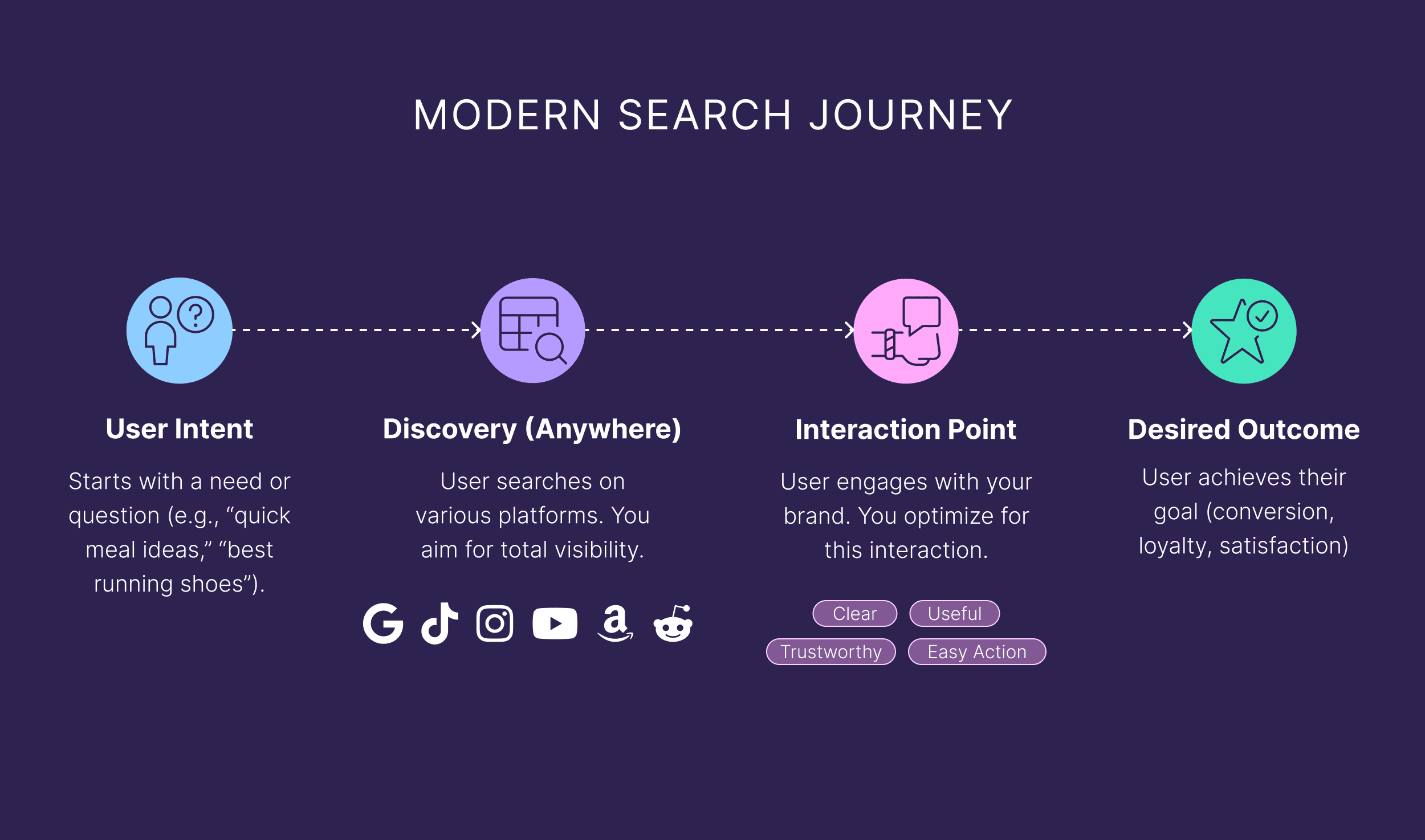
That’s the shift:
From rankings to relevance. From clicks to action. From Google-only to everywhere that matters.
Two Core Areas of Search Everywhere Optimization
To make Search Everywhere Optimization work, you need to understand where your audience is discovering products.
And how much control you have over those moments.
That’s where this framework comes in.
We divide the modern search experience into two key areas:
- Managed experiences — where you control the content and presentation
- Influenced experiences — where others shape the narrative, but your brand still shows up
This distinction helps you prioritize efforts across platforms you own… and platforms where you earn visibility.

Managed Experiences
These are touchpoints you can directly control.
Your website is still your most important owned asset. But you also manage your social media profiles, product listings, app store pages, and more.
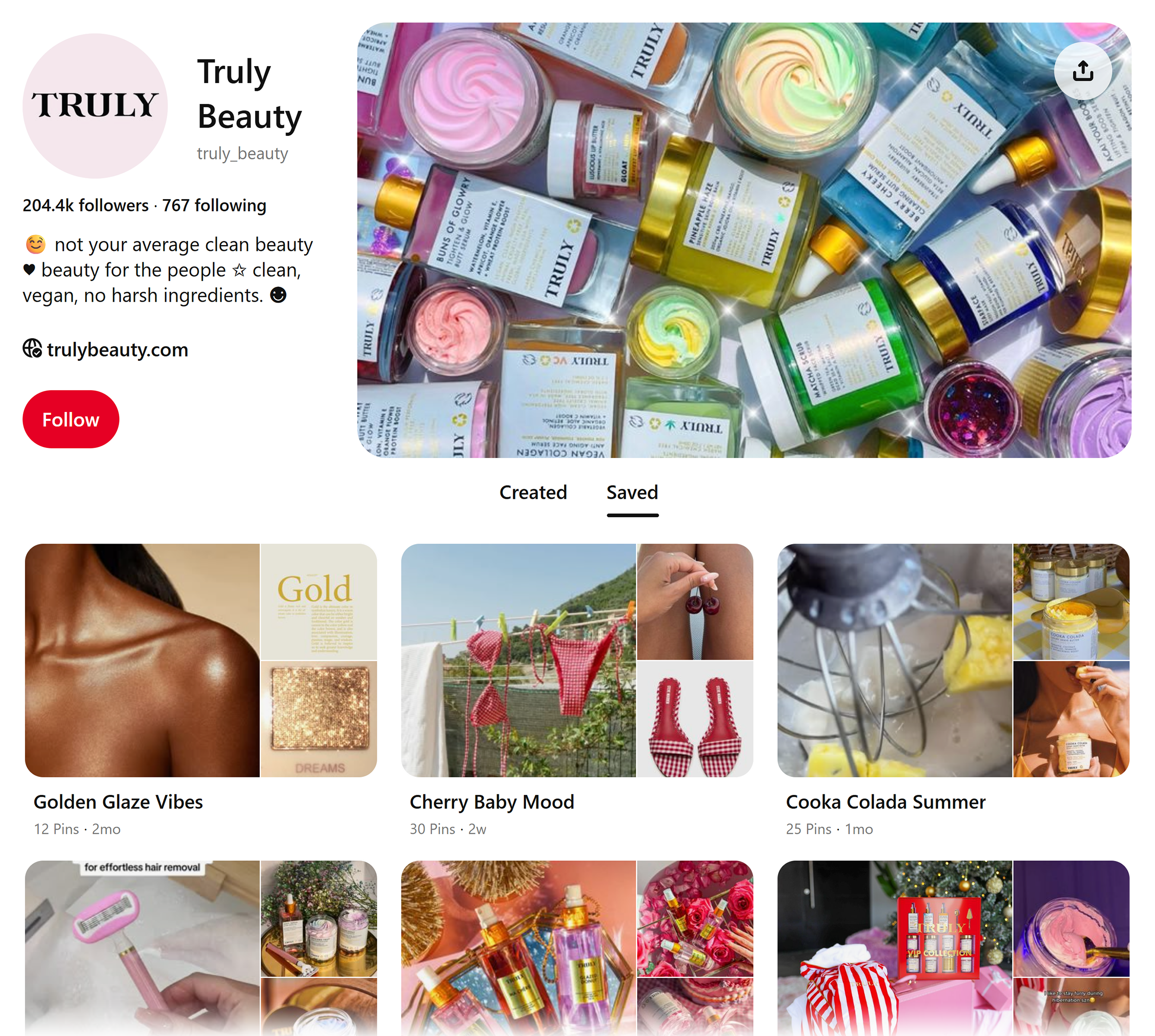
This is where things gets tactical. You’re shaping the journey with:
- Engaging content
- Clear messaging
- Cohesive visuals
- Optimized flows and CTAs
On your website, you can go even deeper — refining structure, page speed, copy, and trust signals.
The goal? Deliver a fast, credible, and conversion-ready experience every time someone finds you through search.
Earned and Influenced Experiences
Now, let’s talk about where you don’t control the narrative.
These are the moments shaped by others: customers, creators, communities, algorithms.
Earned and influenced experiences are touchpoints you don’t directly control.
But they still shape how people perceive and trust your brand.
This includes:
- Customer reviews
- Reddit threads
- YouTube mentions
- Third-party comparisons
- AI-generated responses in tools like ChatGPT
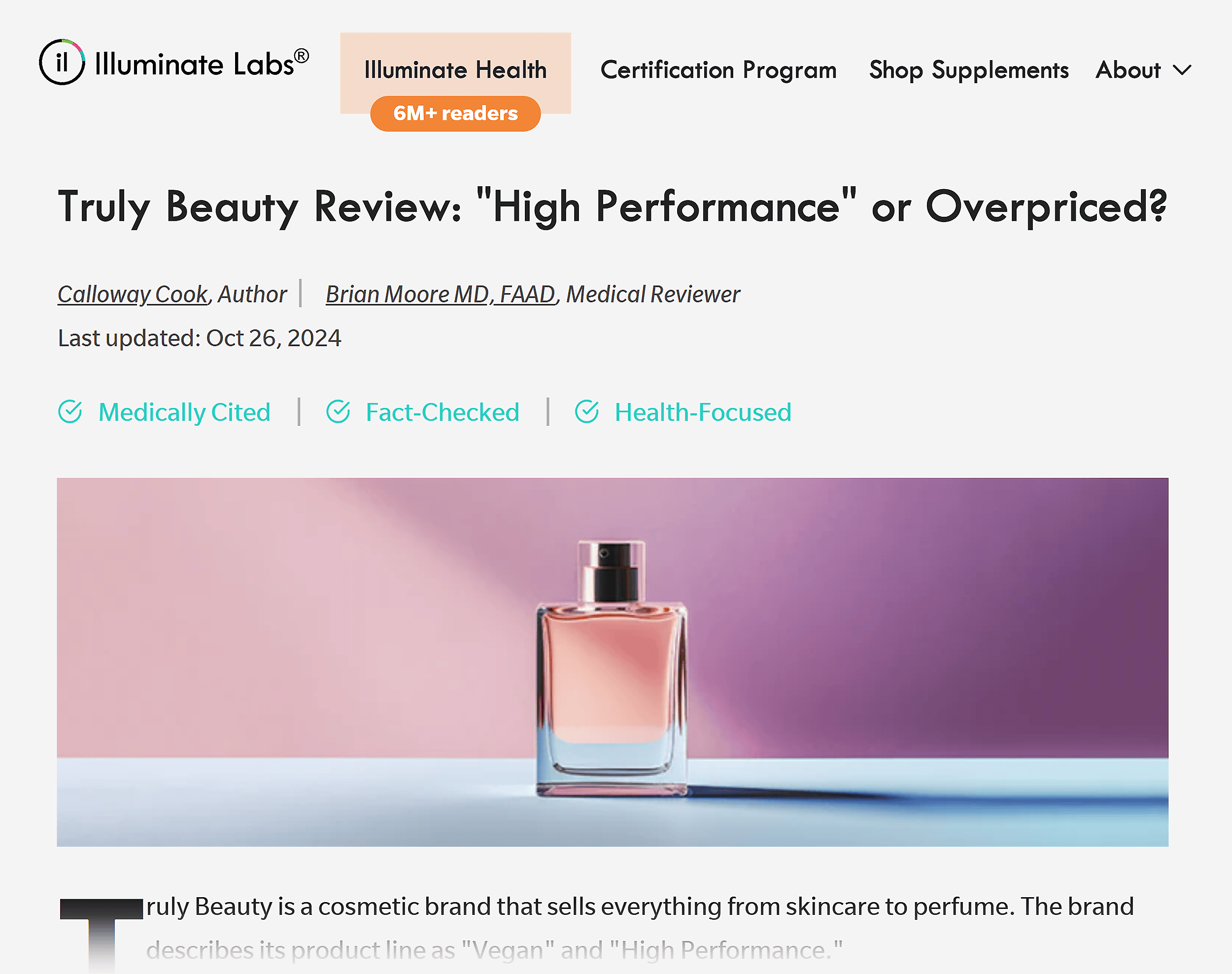
You can’t control these spaces… but you can influence them.
Search Everywhere Optimization is about increasing your visibility, credibility, and perceived value in places you don’t own.
That might mean:
- Engaging in relevant conversations
- Encouraging customer reviews
- Partnering with trusted voices
- Publishing helpful content that others cite
Truly Beauty does this well. Their TikTok is a managed asset. The brand controls the content, caption, and messaging.
This isn’t about control. It’s more about visibility, relevance, and credibility in places people already go to decide.
Luckily, you can help shape perception through helpful content, real engagement, and clear value.
You can pay influencers to review and interact with your product, publish high-quality guest posts. So, you don’t have full control over them, but you can light the fire.
For example, Truly Beauty has a strong presence across owned and earned/influenced platforms.
This includes the brand’s official TikTok account, an owned experience.
The brand controls the content, caption, and messaging.
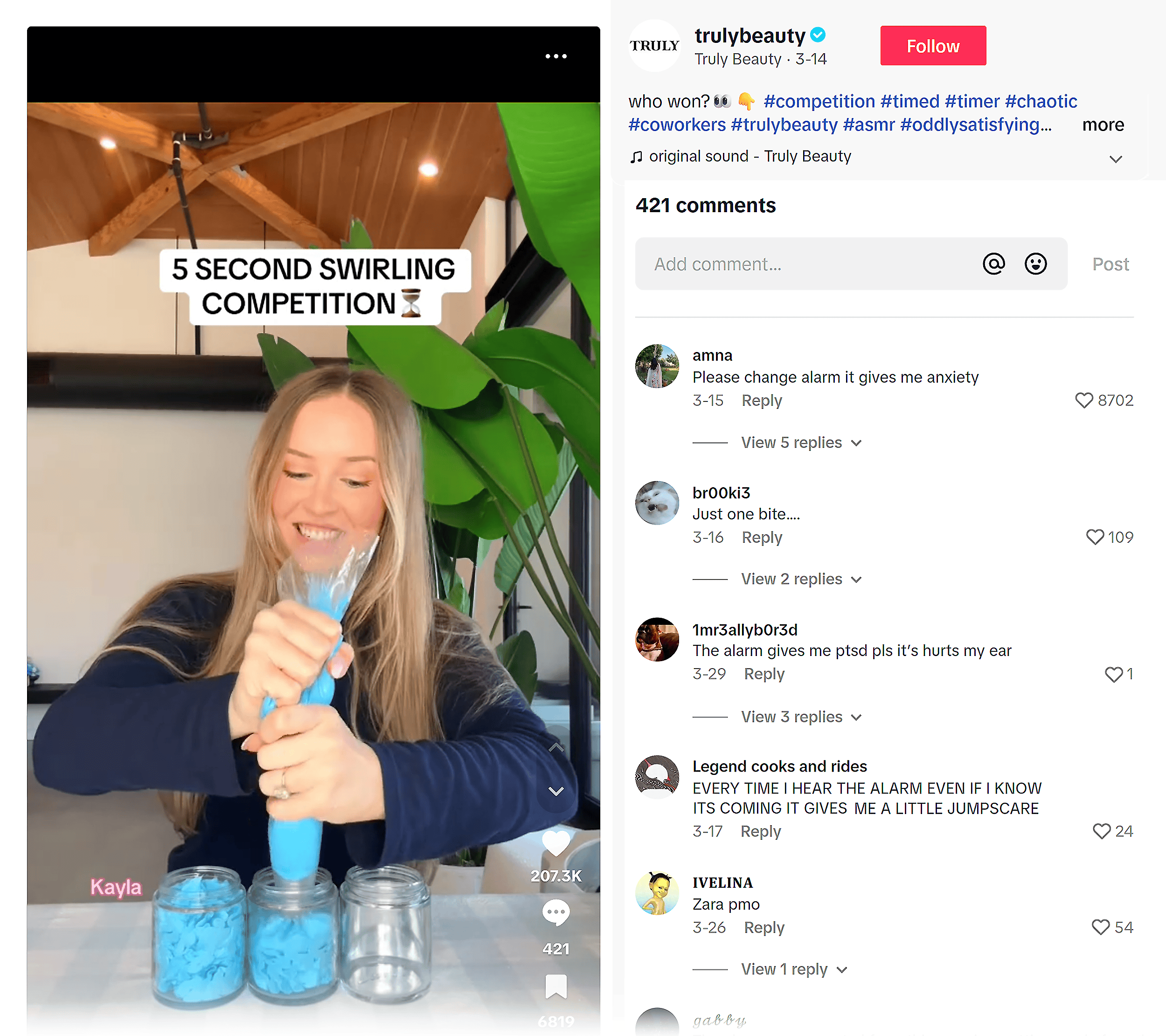
But when someone searches for Truly on TikTok and sees unsponsored reviews? That’s an influenced experience.

Both matter. Because both shape how people perceive your brand.
Search Everywhere Optimization ensures you show up in both worlds (managed and influenced) so you’re part of the journey no matter where it happens.
How Search Everywhere Optimization Builds on Traditional SEO
Traditional SEO has mostly focused on one thing — ranking on search engines like Google.
That still matters.
But it’s no longer enough.
Search Everywhere Optimization expands your SEO strategy beyond Google to include every platform where people search, compare, and decide.
So instead of optimizing just for rankings…
You’re optimizing the entire discovery journey.
This shift doesn’t replace SEO. It levels it up.

Here’s how they work together:
| Traditional SEO |
Search Everywhere Optimization | |
|---|---|---|
| Primary Goal | Drive qualified traffic from Google and other search engines | Help people find, evaluate, and take action across platforms |
| Tactics | Focus on content, keywords, backlinks, and technical fixes | Tailor messaging and format to each platform and stage of the journey |
| Performance Metrics | Metrics include rankings, impressions, CTR, and conversions | Metrics include engagement, watch time, scroll depth, reviews, and cross-platform performance |
Think of it this way:
- Traditional SEO gets you found on Google
- Search Everywhere Optimization gets you chosen — everywhere
When you combine both, you create a strategy that moves with your audience.
Across platforms. Across formats. Across every step of their journey.
Step 1: Define Your Search Personas
Creating search personas lets you outline what your ideal audience wants and needs, and what drives their decisions.
This helps you design content and experiences based on real search behavior, rather than assumptions.

Pro tip: Already have marketing personas? Add a “Search Behavior” section to show how your audience searches, discovers, and evaluates solutions online.
Start with Real People
Before you can build your personas, you need real-world insights.
Go straight to the source by asking existing customers questions like:
- How they found you
- What made them trust you
- What they needed before taking action
Tools like Typeform let you create and distribute surveys.
Start with their ready-to-use consumer behavior templates to make the process fast and easy.
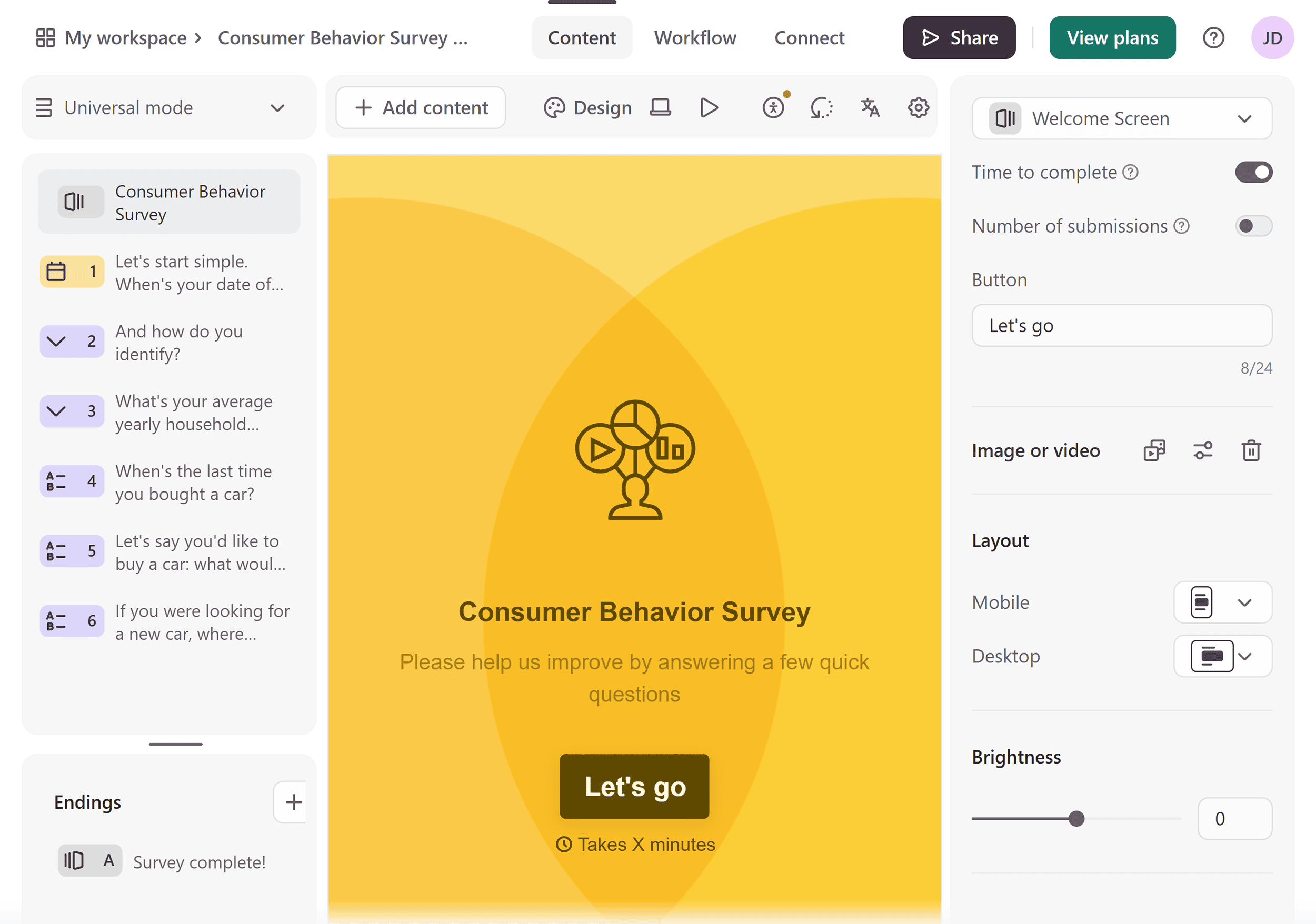
Loop in Sales and Support
No one knows buyer questions better than your frontline team.
Ask them:
- What keywords or phrases do people use when they reach out?
- Which platforms drive user discovery?
- What’s unclear or confusing before people convert?
This input gives you practical insights you can’t get from keyword tools alone.
Layer in Data
Tools like Semrush’s Traffic & Market Toolkit let you analyze your target market’s demographics.
Here’s how it works:
Enter your domain and up to four competitors’ domains.
Click “Analyze.”
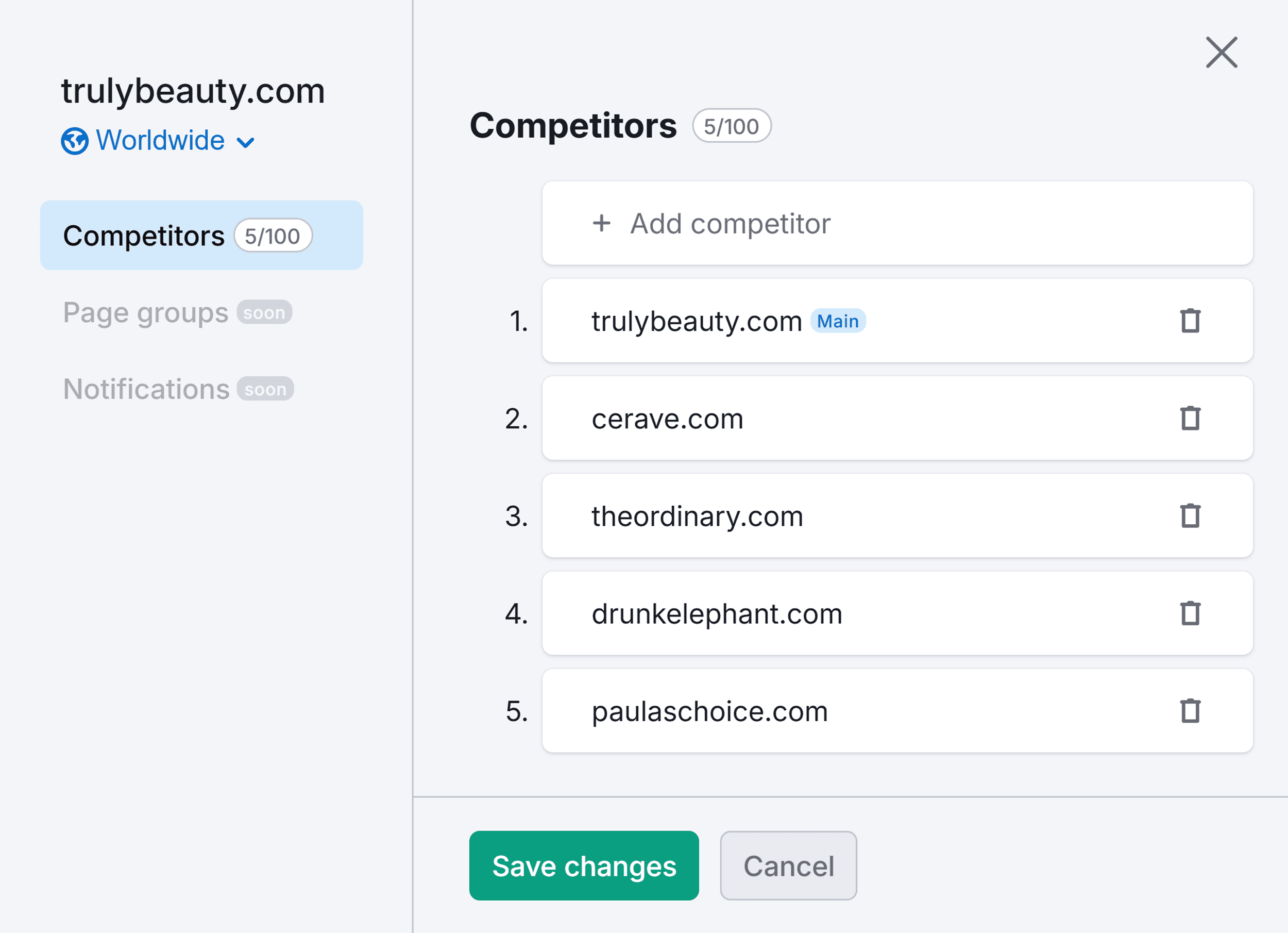
View the “Audience” report to get a breakdown of unique visitors to each domain by age and sex.
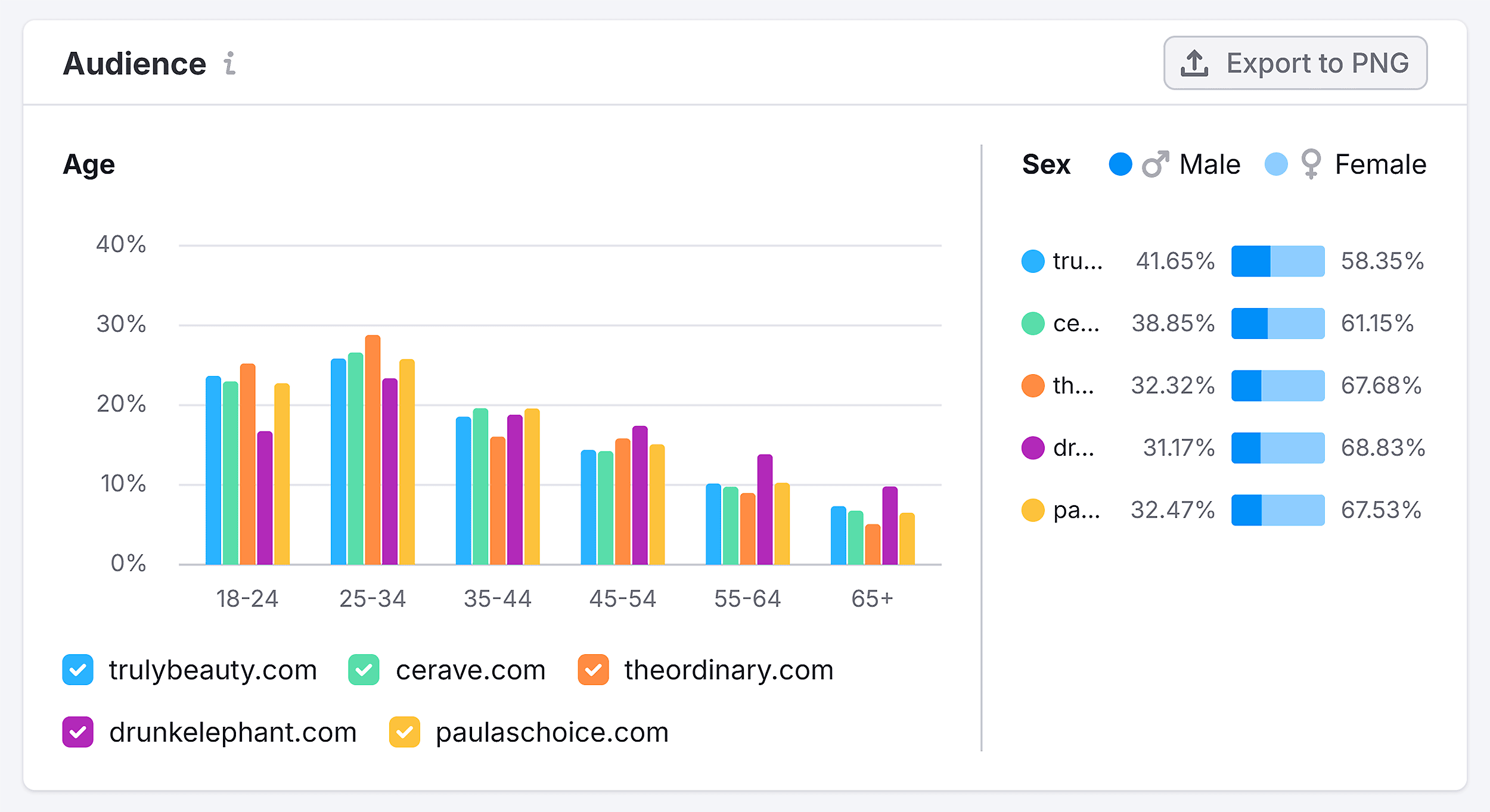
Then, scroll to the “Geo Distribution” report to see an overview of visits and unique visitors by country.
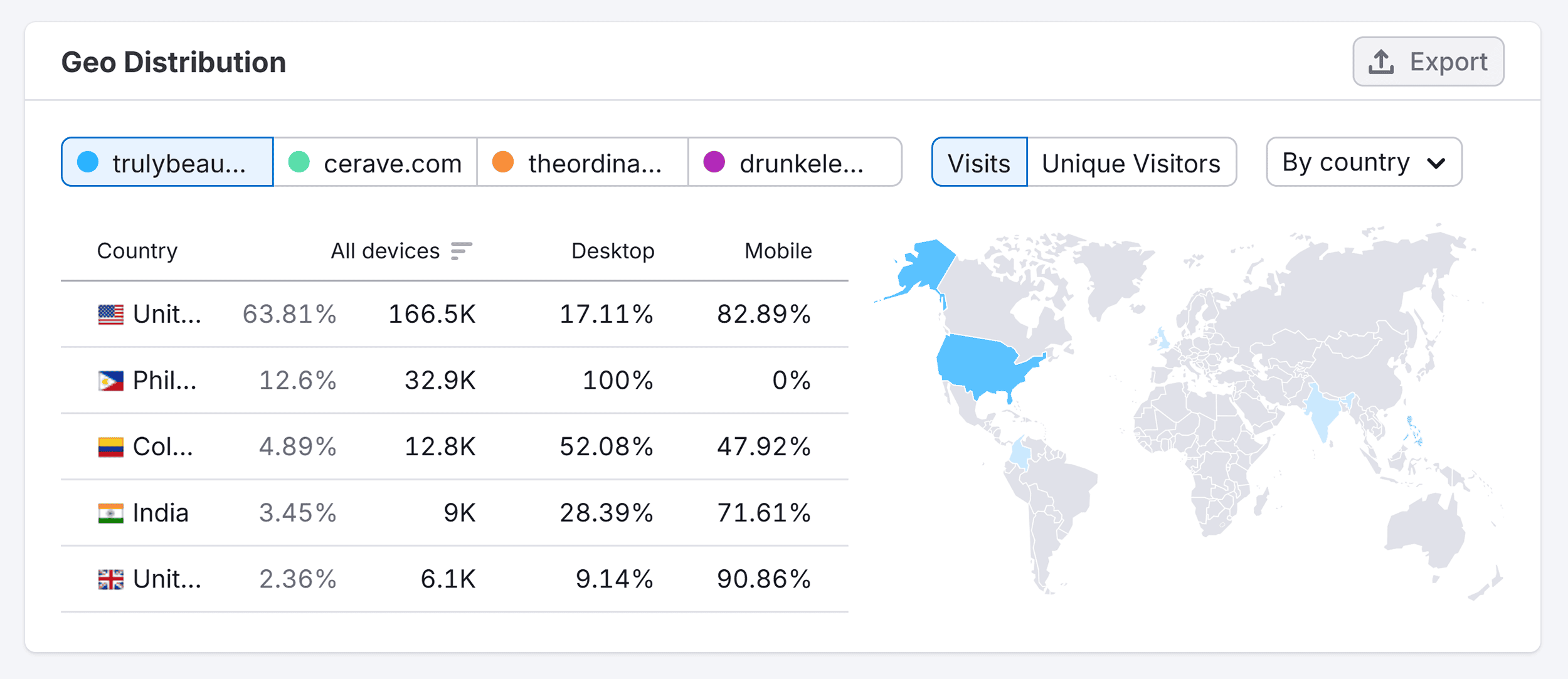
Next, click “Audience Overlap” to learn about your audience’s online habits.
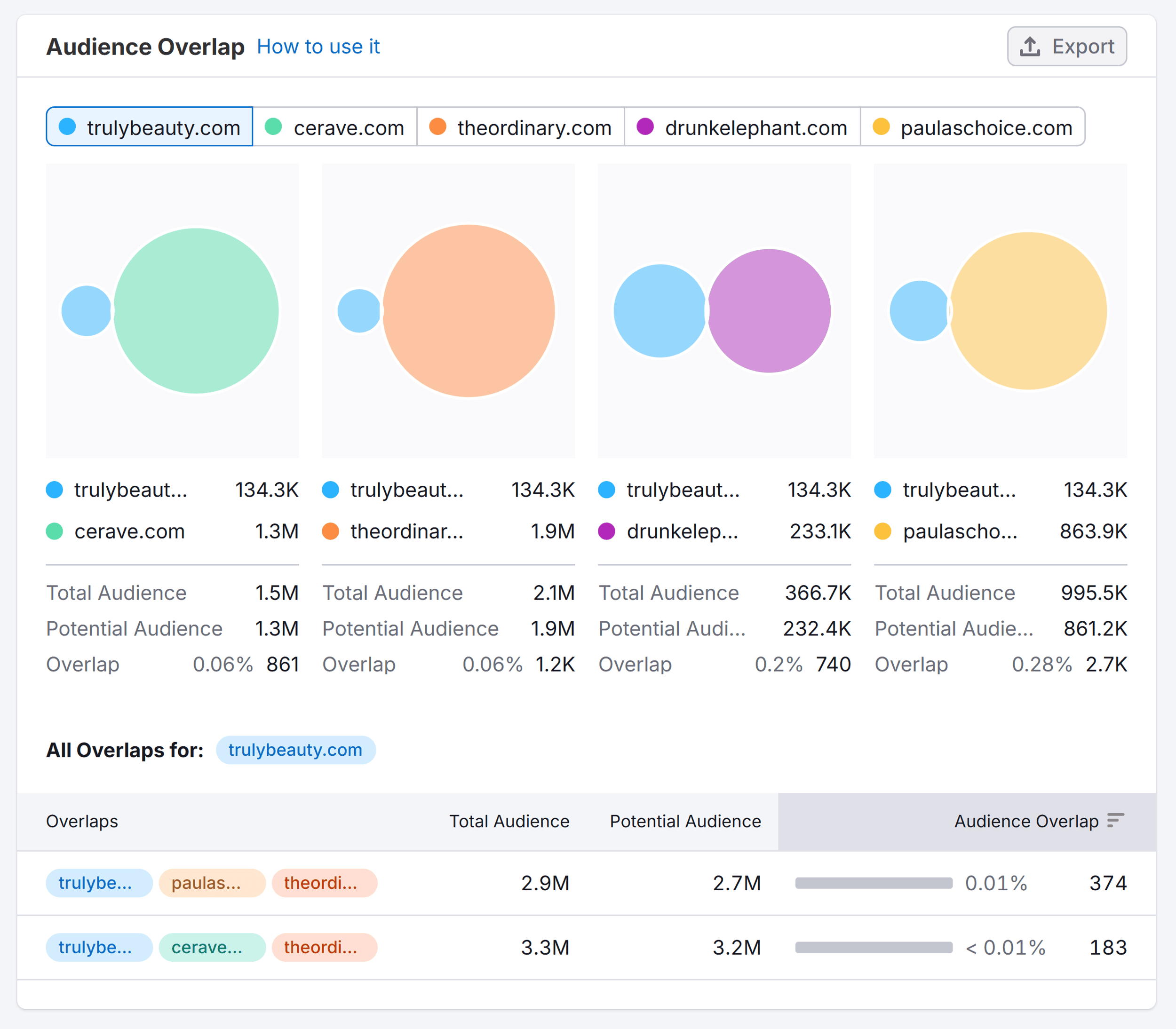
Including their most-visited domains. This gives you insights into their preferences, pain points, and needs.
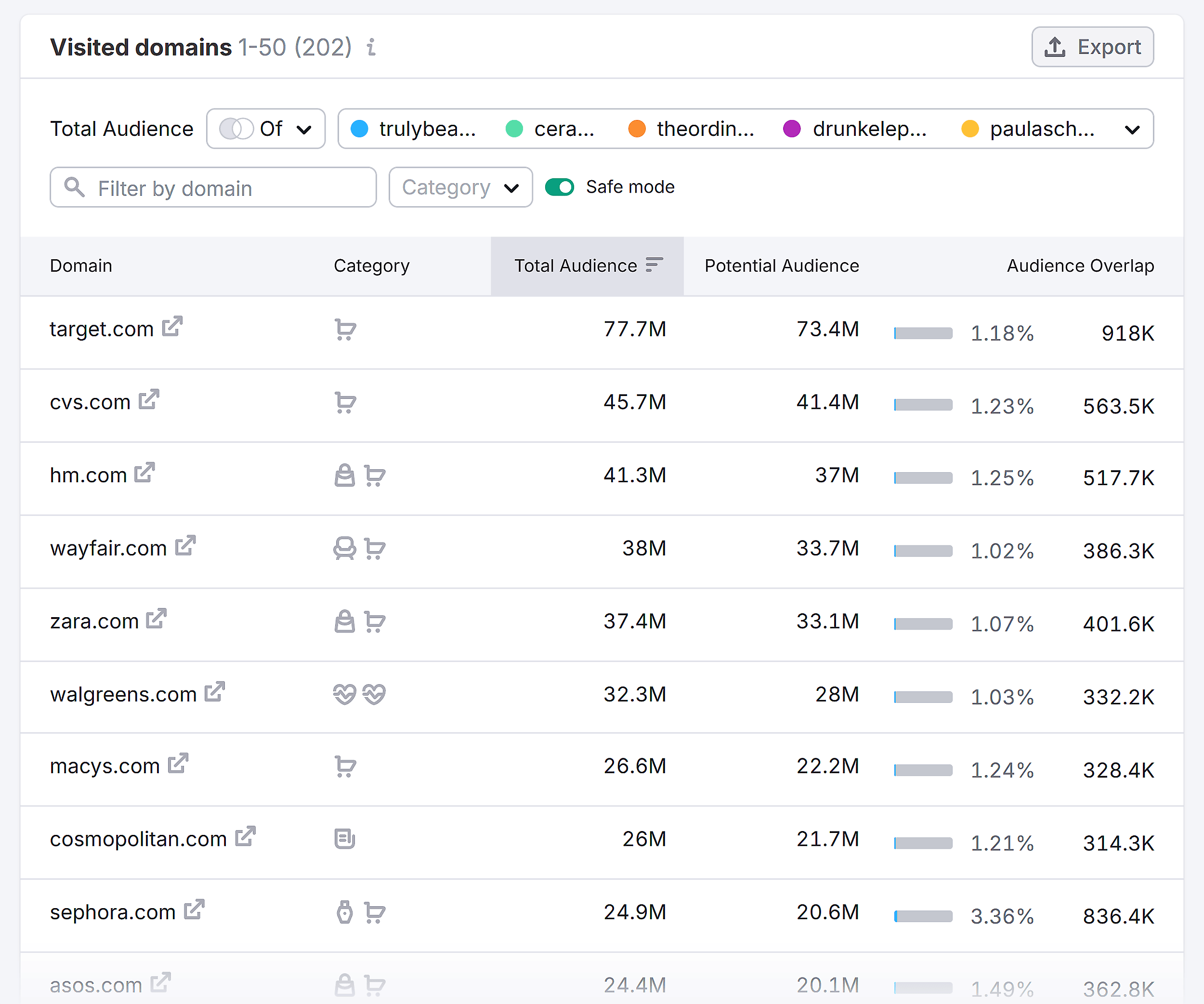
Once you’ve gathered your data, organize everything into a clean visual persona.
Free tools like Semrush’s persona builder make this easy.
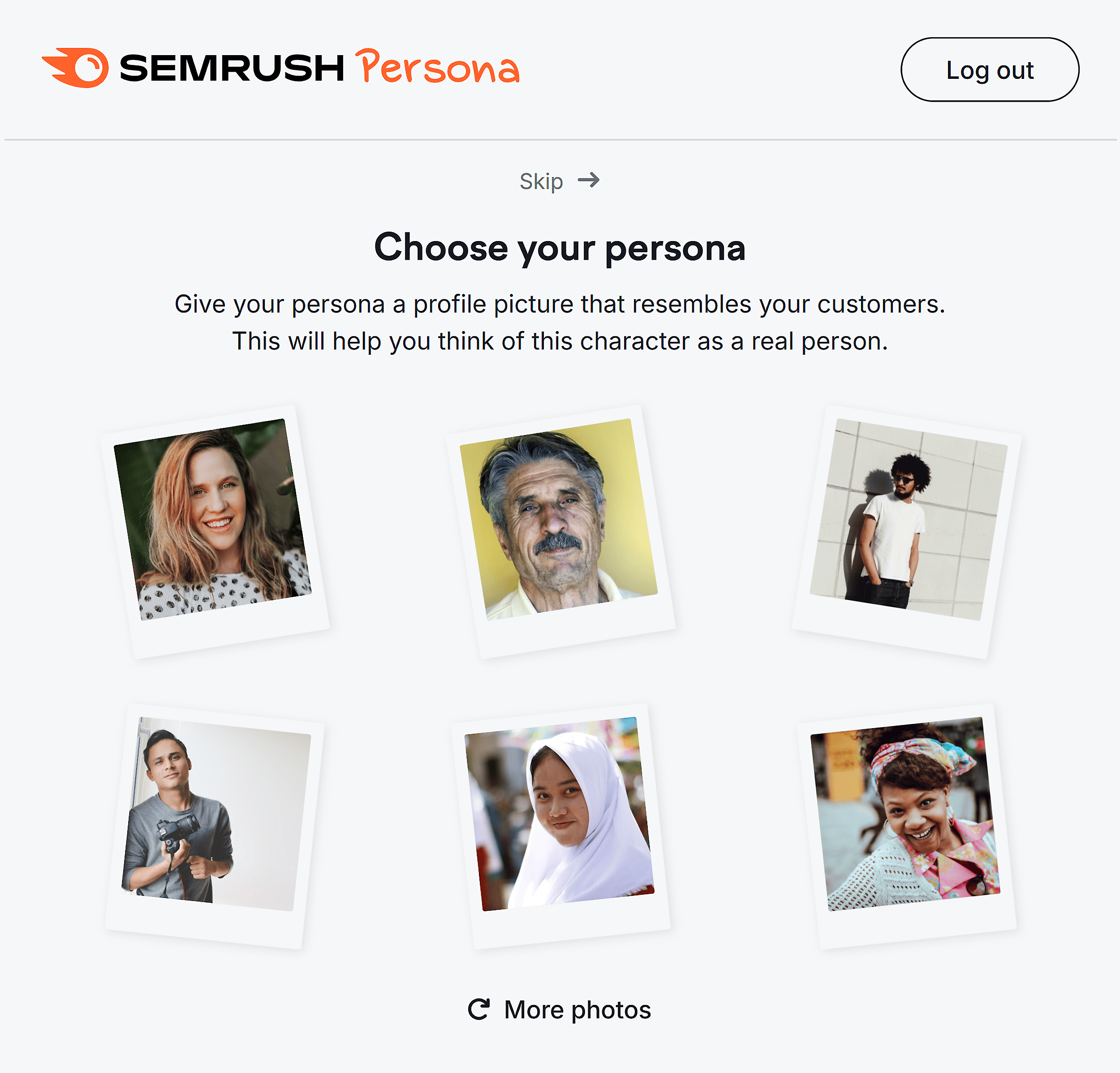
Or just use a doc or spreadsheet — whatever helps you capture the key insights clearly.
By the end, you should know:
- What your audience is trying to solve when they search
- What blocks or gaps slow them down
- What type of content or format resonates most
These insights give you a clear picture of who your searchers are and what matters to them.
Note: You can create multiple personas if your product serves more than one audience. For example, a beginner and a power user won’t search the same way or want the same content.
Step 2: Map the Full Search Journey
Map how each search persona moves from discovery to decision across platforms, questions, and content types.
We want to start by breaking the journey into three simple stages.
Quick note:
I’m showing these stages as a linear progression for simplicity. Real search journeys usually aren’t straightforward.
Users frequently jump between platforms and stages, circling back and moving forward unpredictably. This framework simply helps organize our understanding of the core phases searchers experience.

- Discover: This is when someone first realizes a need or problem and starts looking for ideas, inspiration, or possible solutions
- Compare: At this stage, they evaluate their options, which involves comparing features, reading reviews, or checking alternatives to decide what fits best
- Act: This is when they’re ready to take action. Including making a purchase, signing up, booking a service, or taking the next step.
Expand this journey into more stages and variations as needed.
Like awareness, consideration, evaluation, or post-purchase.
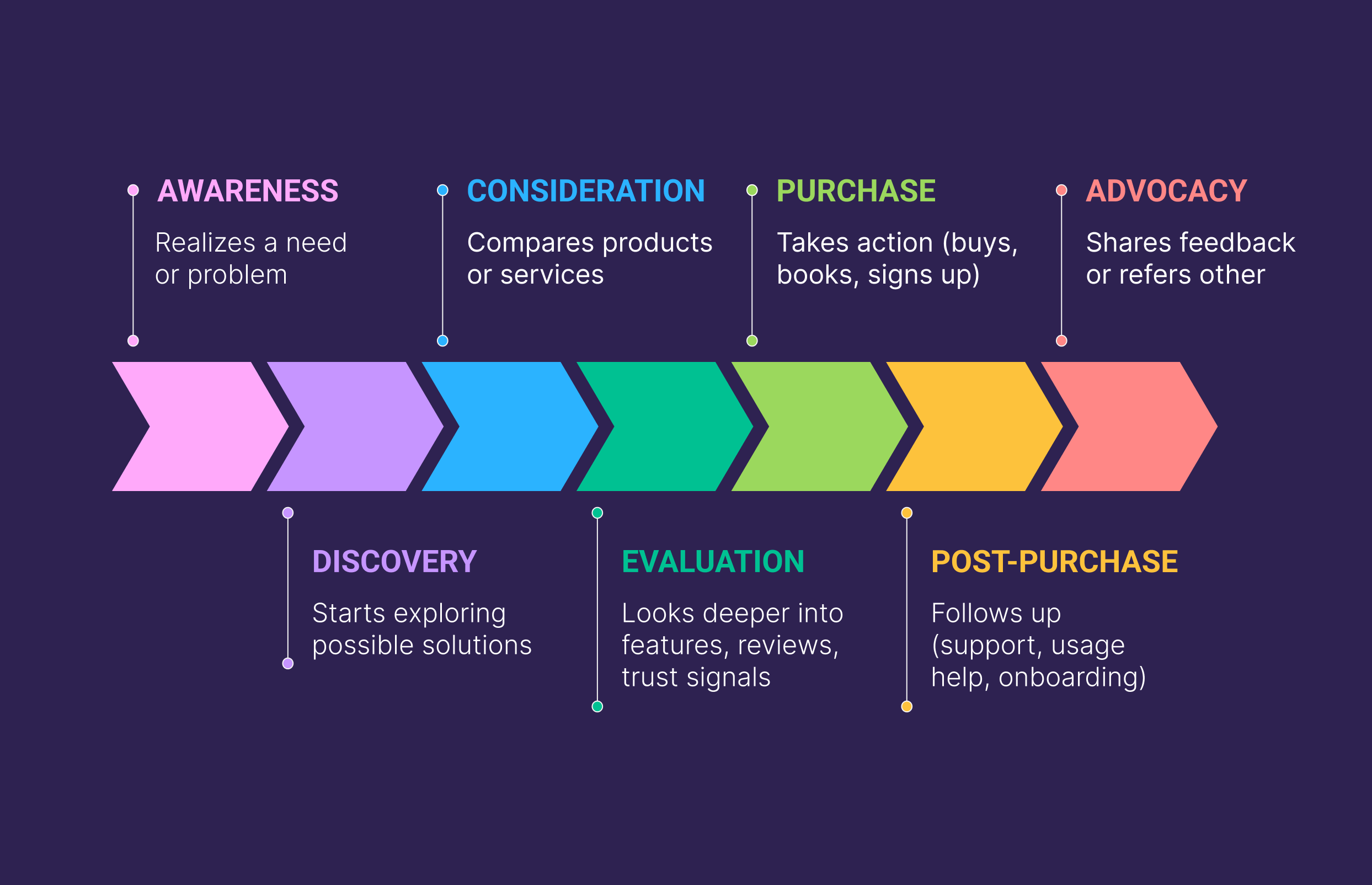
For simplicity, we’ll stick with three core stages.
Then, for each stage, identify:
- What they search for
- Where they go to find answers
- What content format they expect
Let’s say we’re mapping the search journey of a shopper discovering Truly Beauty.
A user might first come across this brand when searching for “best after shave oil” on TikTok.

From there, they Google “after shave oil” and see Truly in the top results.

Next, they visit the brand’s site to view product details, images, and pricing.

After that, they head to YouTube.
They search “truly after shave oil review” to find reviews from real people.
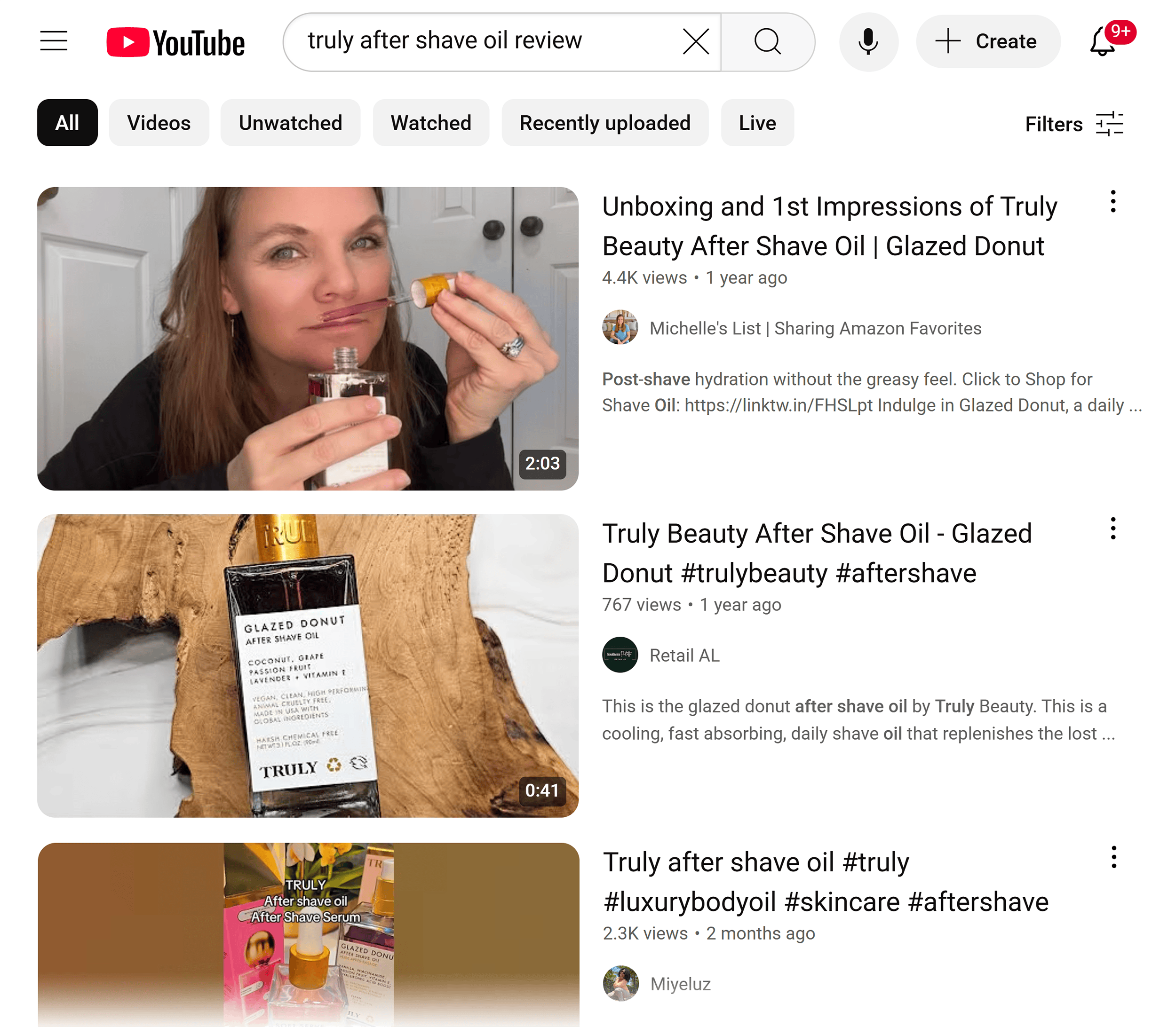
Finally, they visit Amazon, search for the product, and check reviews again before placing their order.

This is a simplified version of your audience’s actual journey.
In reality, searchers might visit more platforms during the discovery and compare stages — spanning days or even weeks.
This is why it helps to map the complete journey.
Like this:

Have more than one persona or product category? Create a separate map for each.
Many platforms offer free customer journey map templates, such as Canva and Miro.
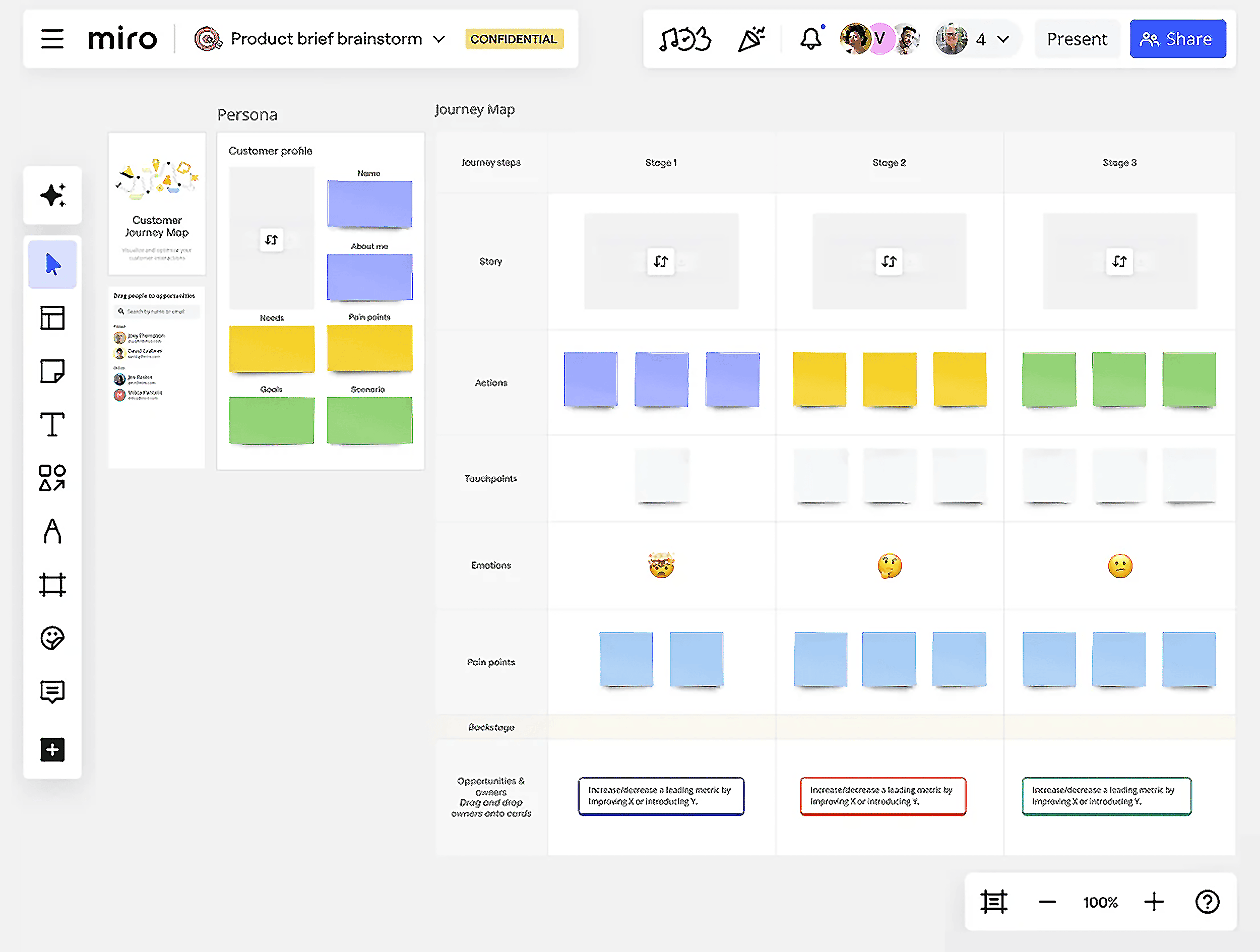
Step 3: Identify Gaps and Prioritize Touchpoints
Here’s where you’ll identify what your brand is missing across the search journey and what to fix first.
Using your journey map from Step 2, go through each stage and ask:
- Are we visible everywhere our audience searches?
- Does our content actually help them move forward?
Let me walk you through an example.
I conducted a quick manual audit for Truly Beauty across multiple platforms.
On TikTok and Instagram, they consistently appear for branded searches like “Truly Beauty.”
And product-specific searches like “vanilla baby body oil.”
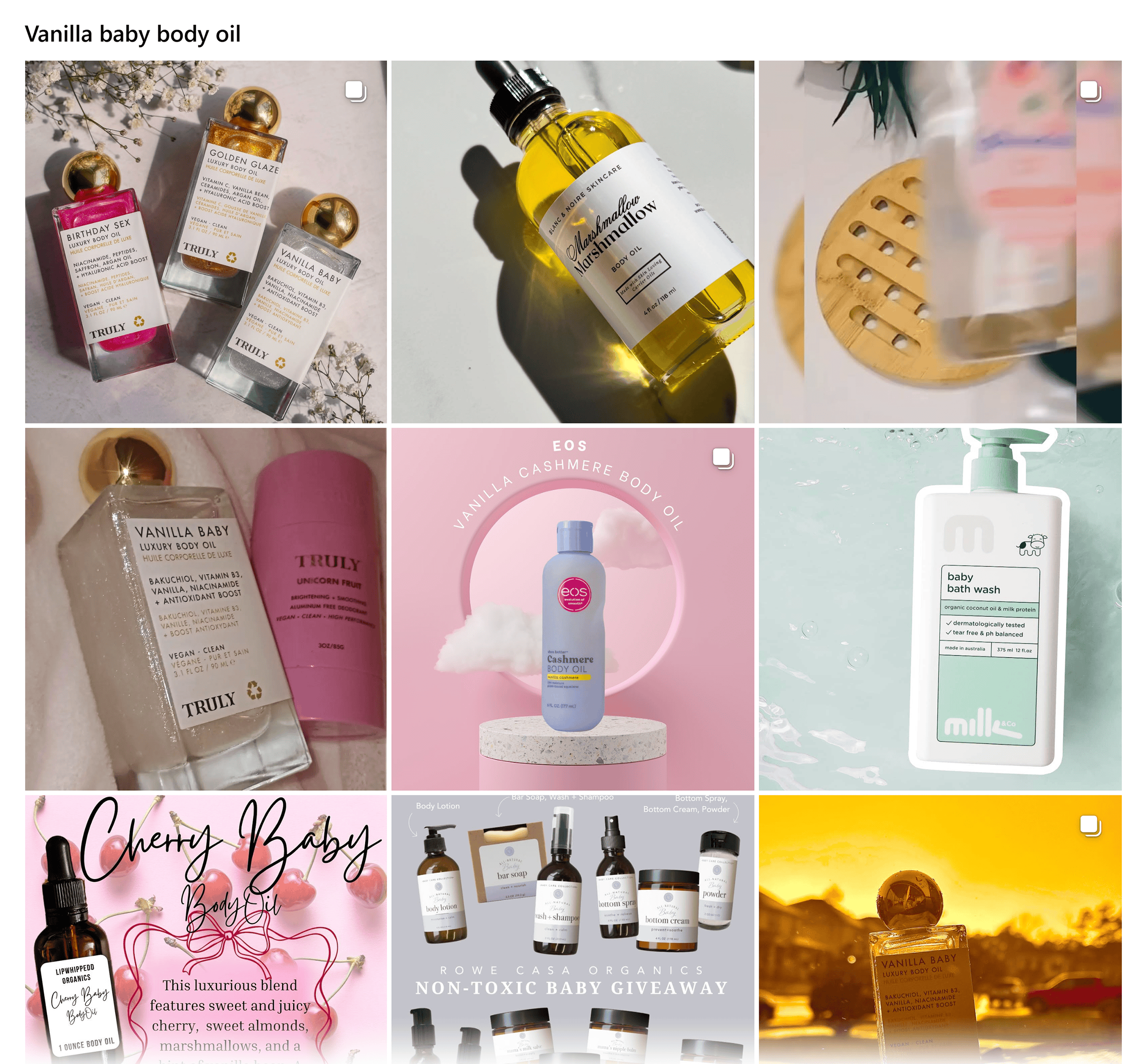
Next, I examined user-generated forums to see if people discuss the brand organically.
On Reddit, I found some positive threads where users recommend Truly products.
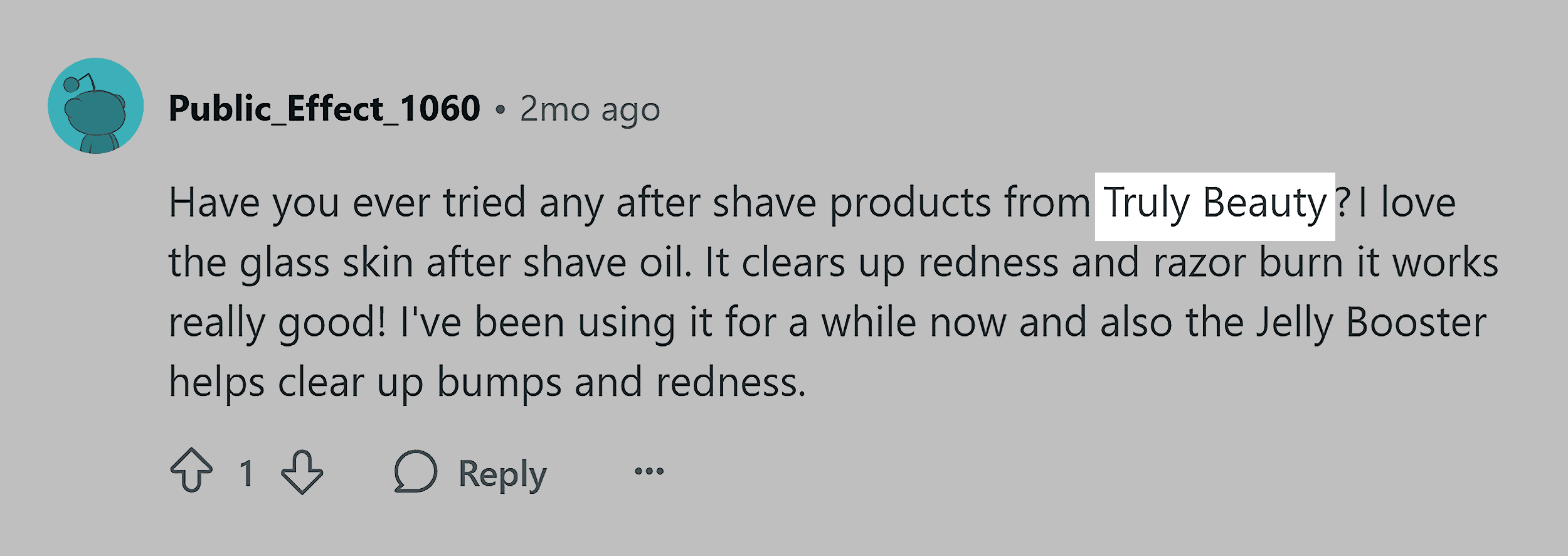
And some negative threads, too.
Overall, Truly Beauty could have a stronger presence in earned and influenced spaces.
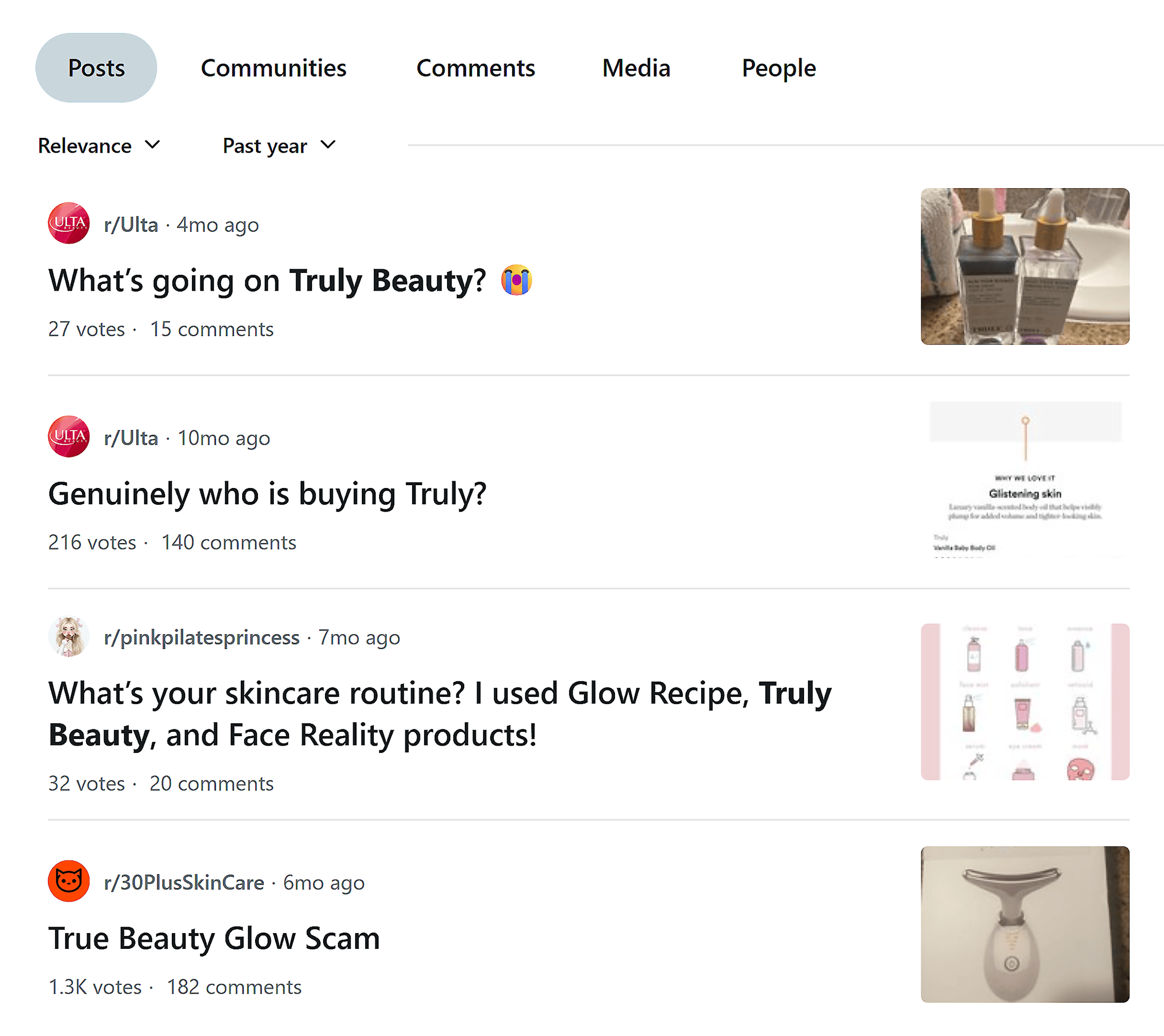
I then analyzed Truly’s product pages.
Their website features several conversion elements:
- Social proof (ratings and reviews)
- Clear pricing and purchase options
- Subscription incentives
- Trust badges
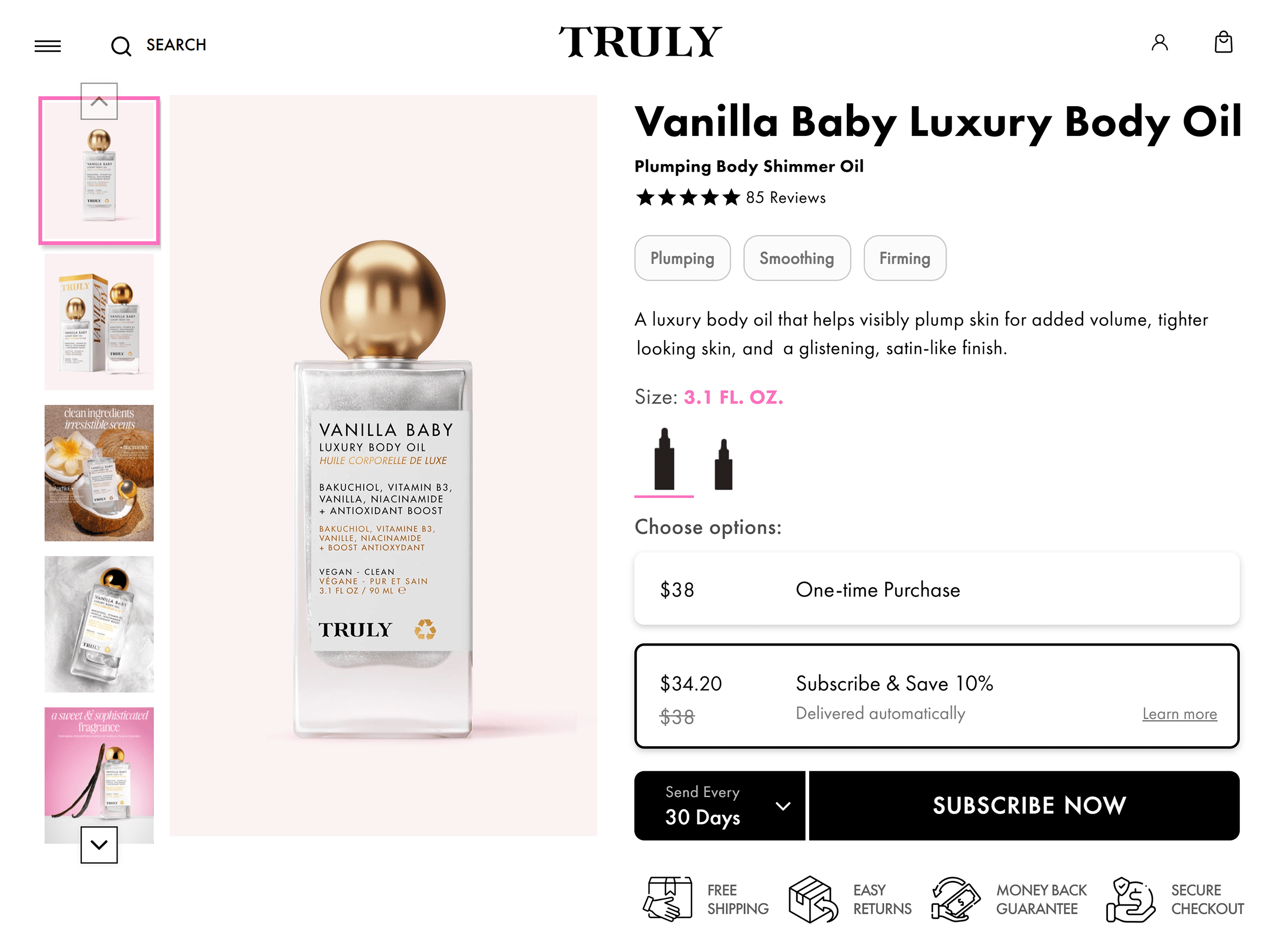
Their Amazon listings maintain this strategy while adapting to the marketplace’s format.
This way, they create a consistent purchase experience regardless of where customers shop.
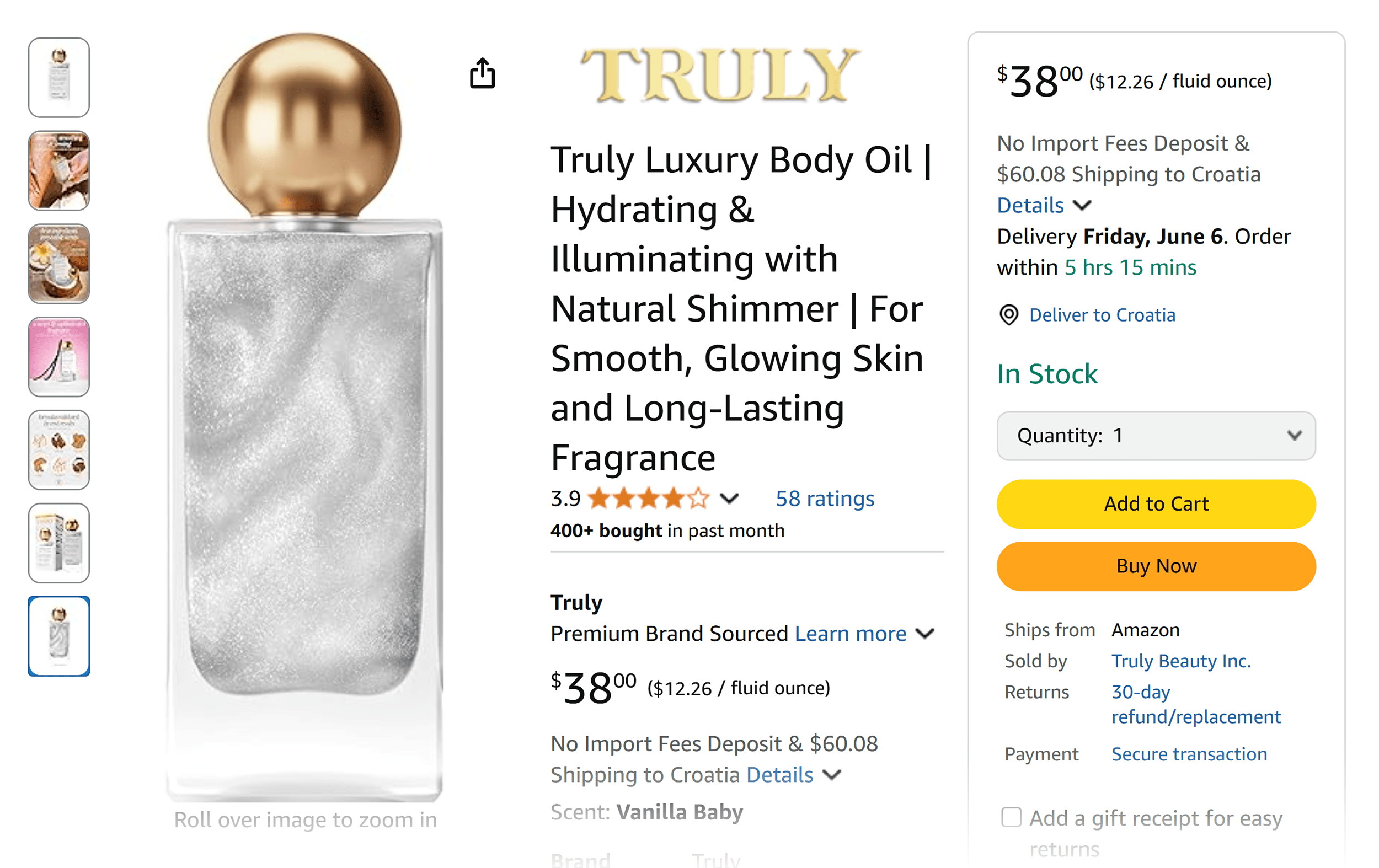
You’ll want to adjust this process based on your specific industry, audience, and platforms.
The key is documenting all touchpoints where your audience searches.
Once you’ve audited all platforms, organize your findings in a simple spreadsheet.
Include a “Status” column to label your presence on each platform:
- Optimized
- Weak
- Missing
Here’s an example to show how you might organize your audit insights.
Feel free to structure it however works best for you.
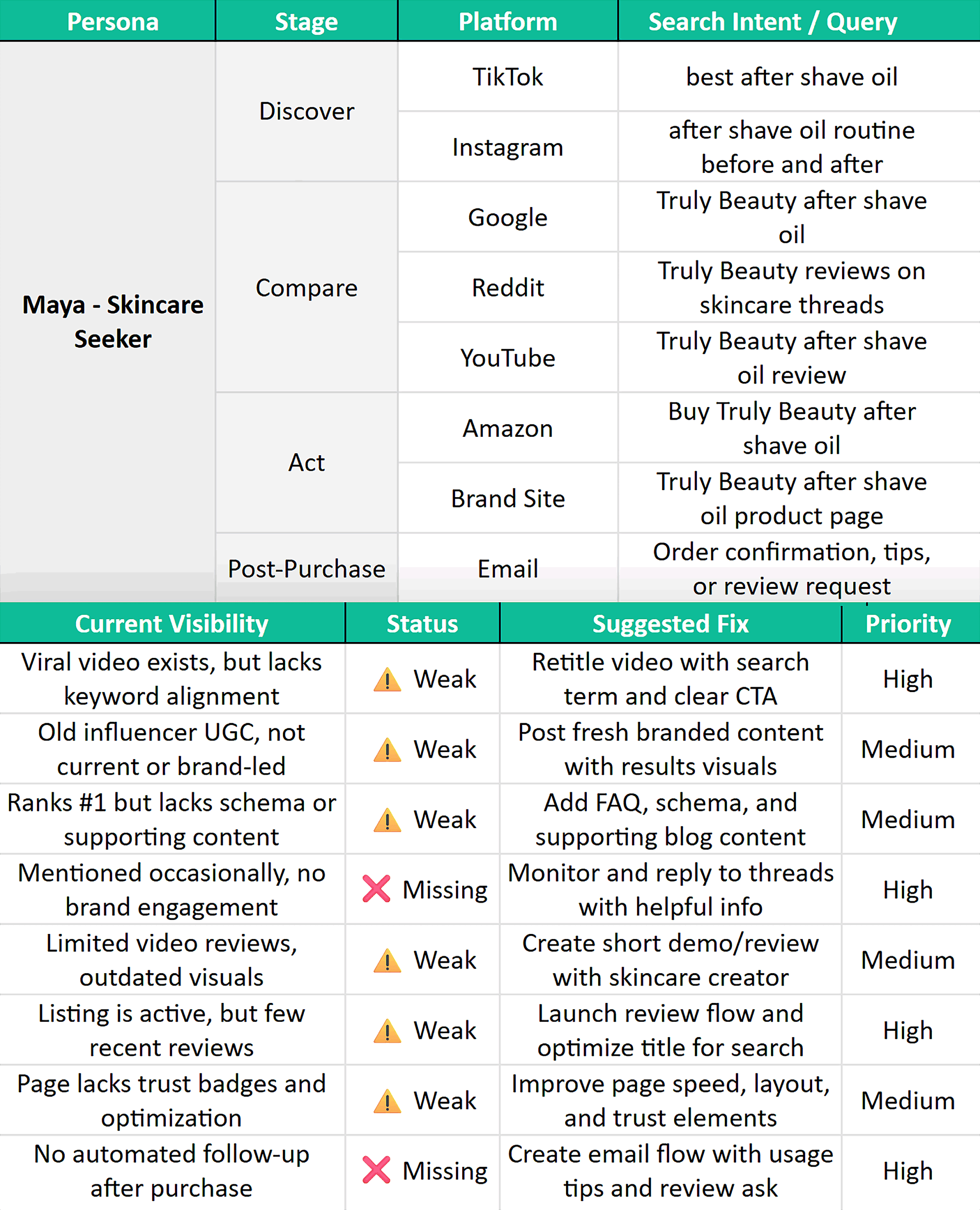
Bonus: We added the above audit template to our downloadable checklist to help you complete this step. Download it now, if you haven’t already.
Now, it’s time to decide which platforms need attention first:
In Truly Beauty’s case, they could strengthen their presence in earned spaces.
Responding to positive and negative feedback builds trust with potential customers.
This might mean recommending products where appropriate.
And addressing any user concerns and complaints.
Prioritize your own gaps based on:
- Where users likely drop off or switch to competitors
- High-intent moments like evaluation or decision stages
- Platforms your audience already trusts and uses to make decisions
This focused approach ensures you tackle the most impactful improvements first.
Further reading: How to Run a Content Audit in 6 Easy Steps
Step 4: Build a Content Plan Aligned with Search Intent
A key part of any strategy is planning content for each search stage and platform.
Use your audit insights from Step 3 to build a content plan that satisfies user needs.
Improve Your Existing Content
Before creating new content, maximize what you already have.
Check Google Analytics or Google Search Console (GSC) for pages that are underperforming.
For example, in GSC, look for:
- Posts with high impressions but low CTR
- Pages that rank for relevant keywords, but not as high as they should

Consider this Truly Beauty blog post as an example.

It already targets commercial keywords, like “best moisturizer for mature skin.”
But it ranks on page 4, 5, and beyond.
This means it’s nearly invisible in search.

So, how do you fix that?
Check what they include that you don’t, like additional examples, FAQs, or expert commentary.
Then, improve the content by:
- Updating it with fresh info, product comparisons, or reviews
- Adding structure that matches search intent (like “best of” lists, buyer’s guides, etc.)
- Enhancing formatting for scannability — with subheadings, bullets, and visuals
- Filling gaps with missing subtopics or angles competitors cover
For instance, Truly Beauty could improve this post by adding:
- A side-by-side comparison with other moisturizers
- Tips from skincare experts
- More visuals (like product images, charts, or before/after shots)
These updates would help align the content with what searchers expect. And give it a better shot at ranking.
Further reading: Google E-E-A-T: How to Create People-First Content + Free Audit
Create New Content
Creating new content for every platform should be an ongoing part of your strategy.
For each platform, ask:
- Is the user trying to learn, compare, or act?
- What format do they expect — video, reviews, short posts, or product pages?
- What would build trust or answer their next question?
Semrush’s Topic Research Tool helps you find new content ideas.
Open the tool and enter a topic. Like “best body scrub for glowing skin.”
Then, select your target location and click “Get content ideas.”
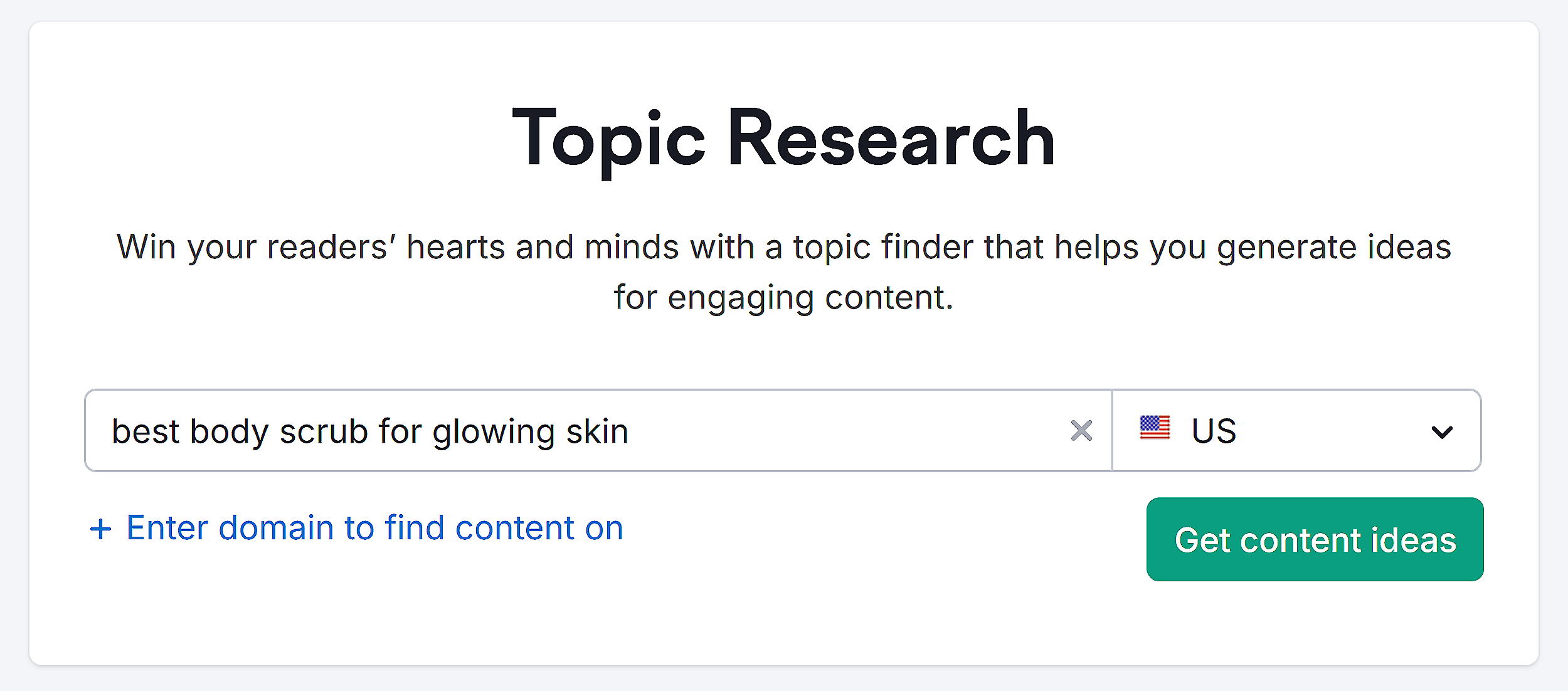
Click on a relevant subtopic.
And go through the “Questions” column to see what users are actively searching for.
For example, Truly Beauty could turn common questions into helpful content that drives conversions.
Like “What are some good homemade body scrubs?” and “How do you make a homemade scrub?”
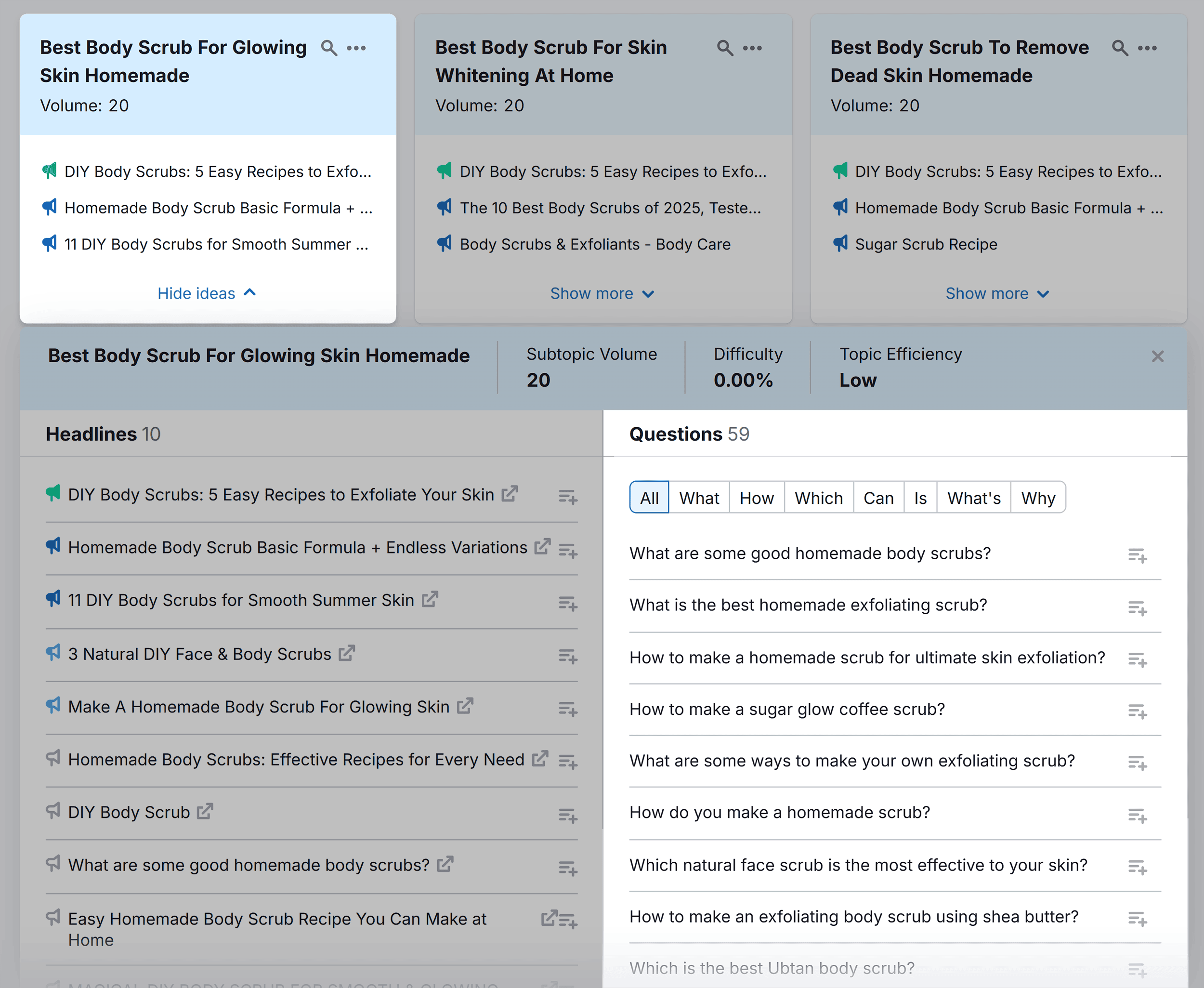
Analyzing competitor content can also help you come up with great topic ideas.
Look at top-performing content across platforms where your audience searches.
Pay special attention to:
- Content themes
- Hooks
- Formats
- Captions
- Hashtags
For instance, Truly Beauty’s audience might search “best body scrubs for glowing skin” on TikTok.
The brand could explore top-performing videos around that phrase.
And analyze what makes them successful.
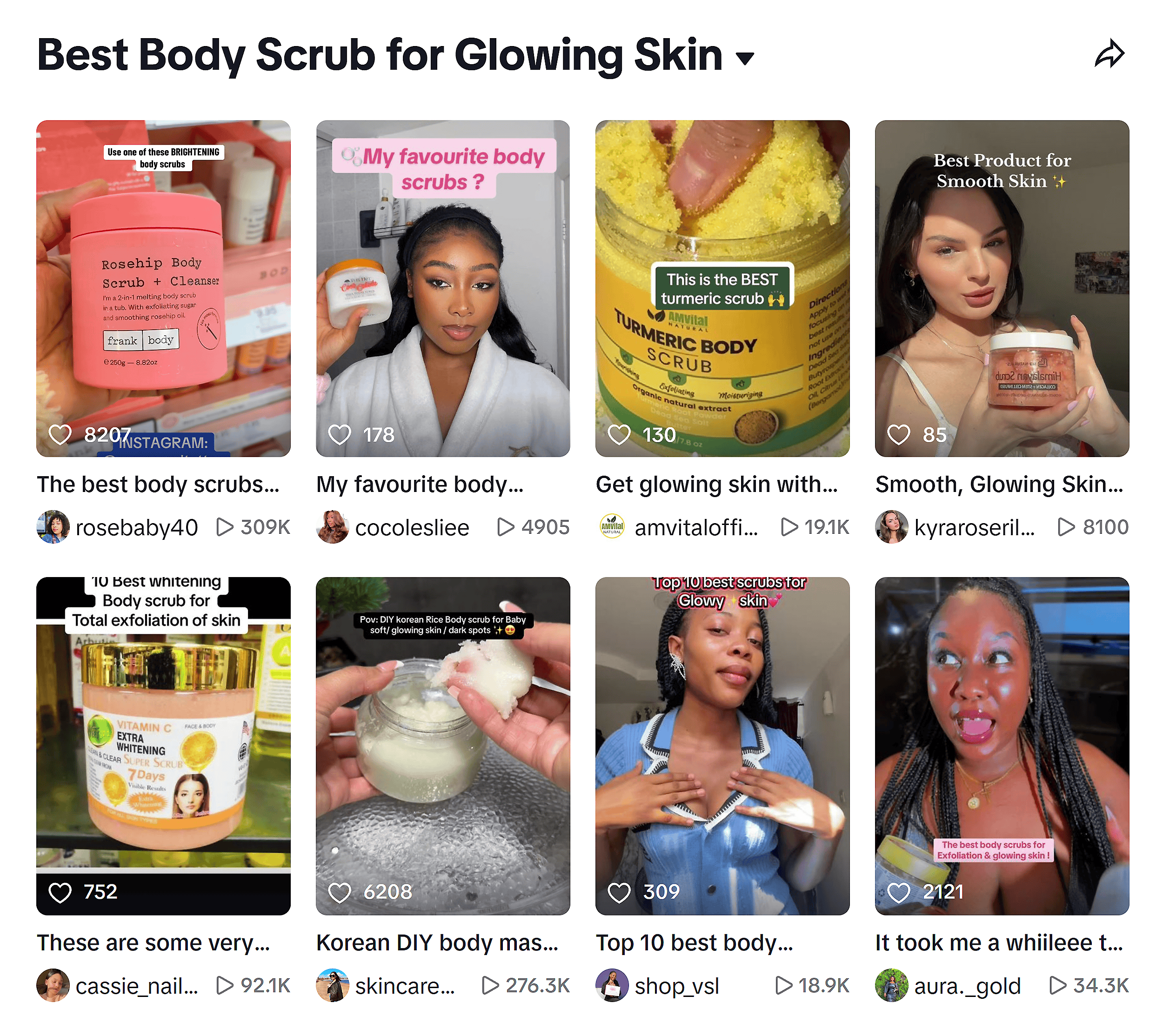
Then, they could use what they find to create videos that mirror those formats — while tailoring them to their product and audience.
(And you can, too.)
Repurpose Content
Don’t let great content live in one place.
The most efficient strategy turns one strong piece into many platform-specific assets.
Start with your highest-performing content.
Then, adapt it to match how your audience consumes information on different platforms.

For example, Truly Beauty could transform their “12 Best Foods for Your Skin” blog post into the following:
- Email newsletter
- Pinterest infographic
- Facebook and Instagram carousels
- TikTok, Instagram Reels, and YouTube Shorts
- Twitter/X or Bluesky thread
One idea → multiple formats → broader discovery.
This way, you can easily scale content across the entire search experience for every platform.
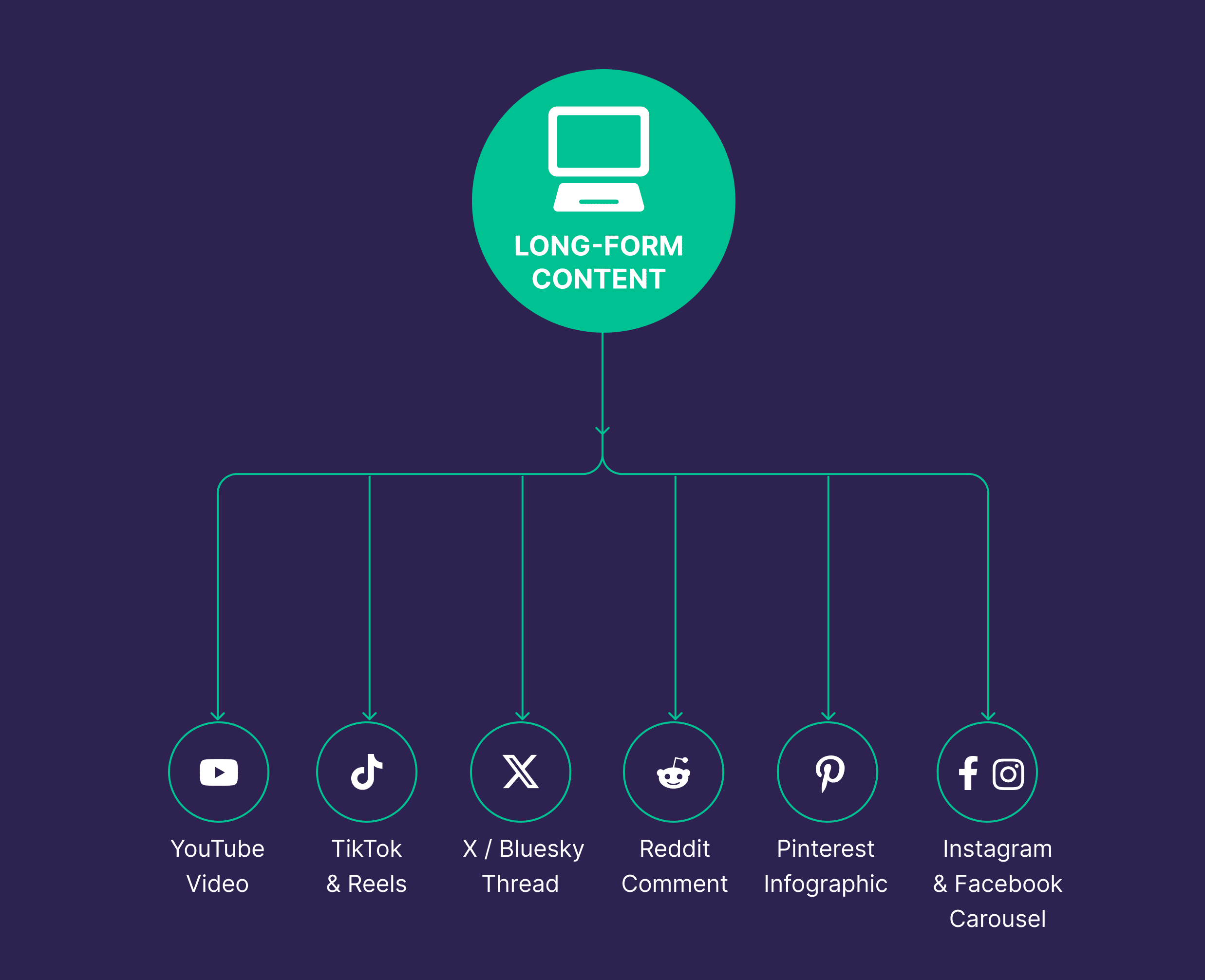
Step 5: Optimize Owned Touchpoints
When someone lands on your site, they expect it to:
- Load fast
- Feel trustworthy
- Make it easy to take the next step
In fact, search engines like Google look at user experience signals when ranking pages.
That’s why this step focuses on performance, structure, and clarity, so your site works for users and ranks highly.
Improve Site Performance
Slow-loading pages lead to higher bounce rates, missed conversions, and lower rankings.
Use PageSpeed Insights to analyze your site.
And view your Core Web Vitals scores, which are Google user experience metrics.
These metrics measure user responsiveness, visual stability, and the speed at which your main content loads.
For example, Truly Beauty’s website failed the Core Web Vitals assessment on both mobile and desktop.
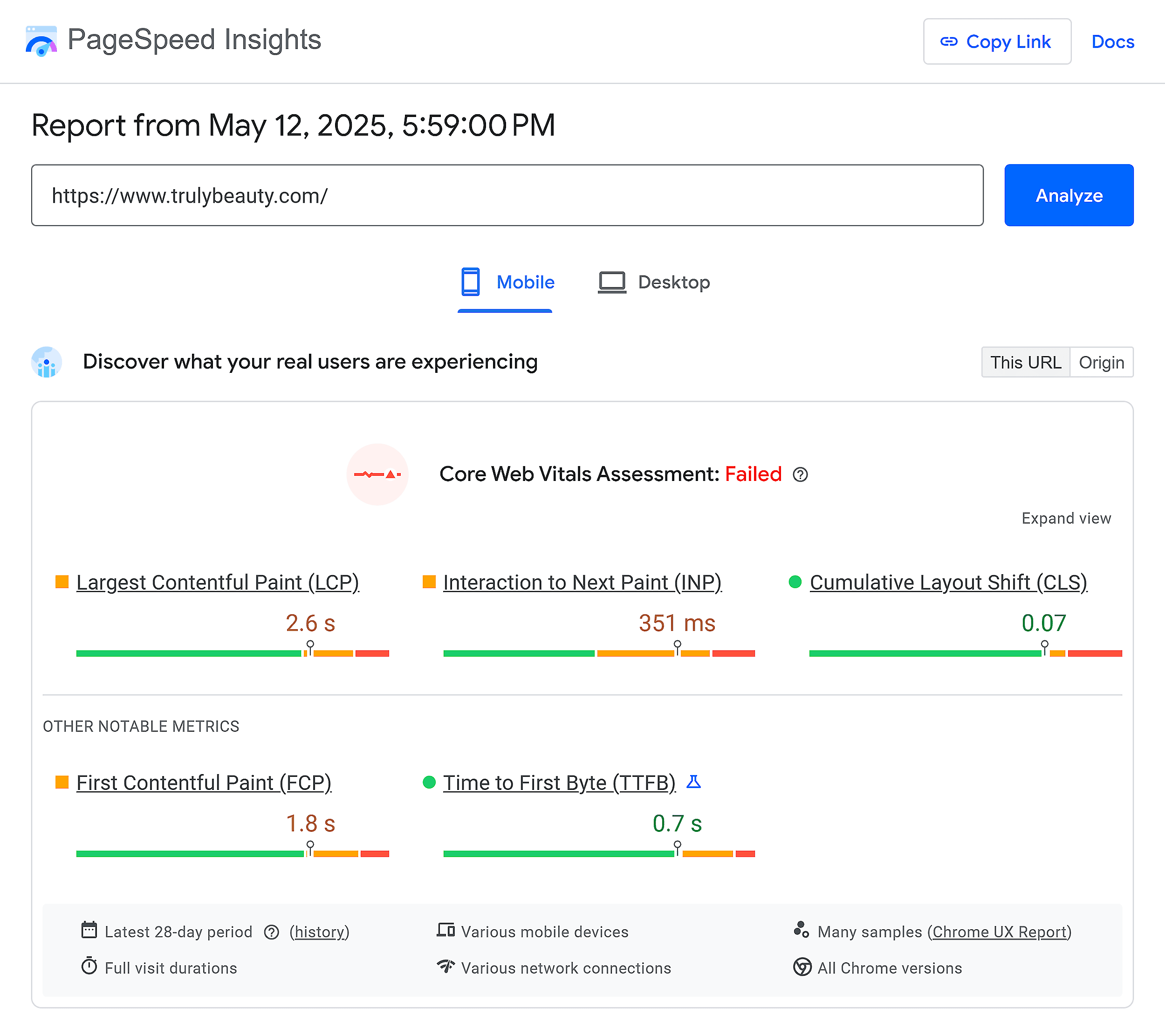
The good news?
PageSpeed Insights also shows exactly what’s slowing your site down and how you can fix the issues.
So, Truly Beauty can improve site performance by taking steps like reducing JavaScript execution time and minimizing main-thread work.
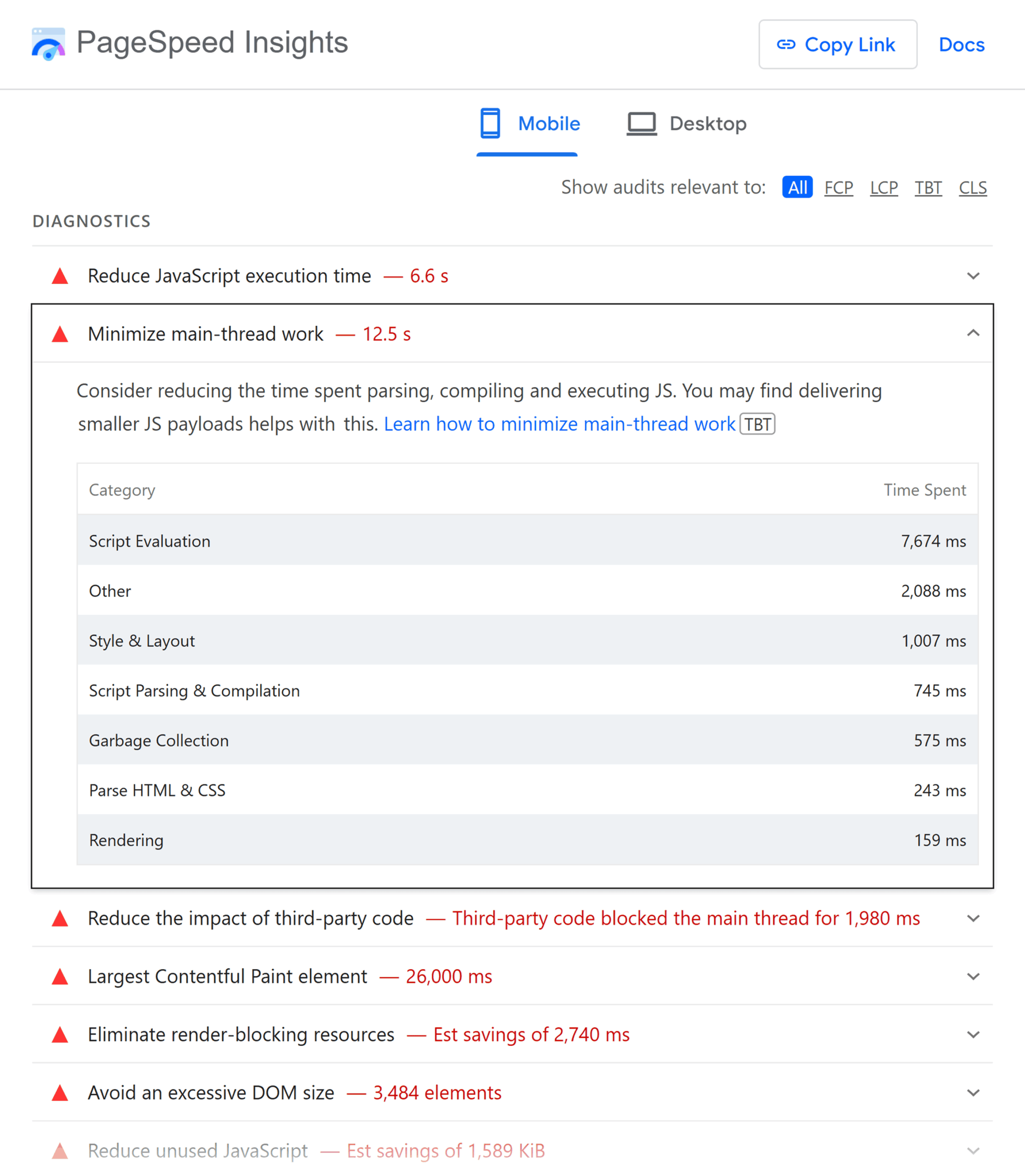
For a deeper look at your site’s speed and usability, use Semrush’s Site Audit tool.
Note: A free Semrush account allows you to crawl up to 100 URLs using Site Audit. Or you can use this link to access a 14-day trial on a Semrush Pro subscription.
Enter your domain and configure the tool to set up your first crawl.
Once your report is ready, you’ll see a “Site Performance” score in the “Overview” tab.
For instance, Truly Beauty has a site performance score of 95%.
Click “View details” for more information.
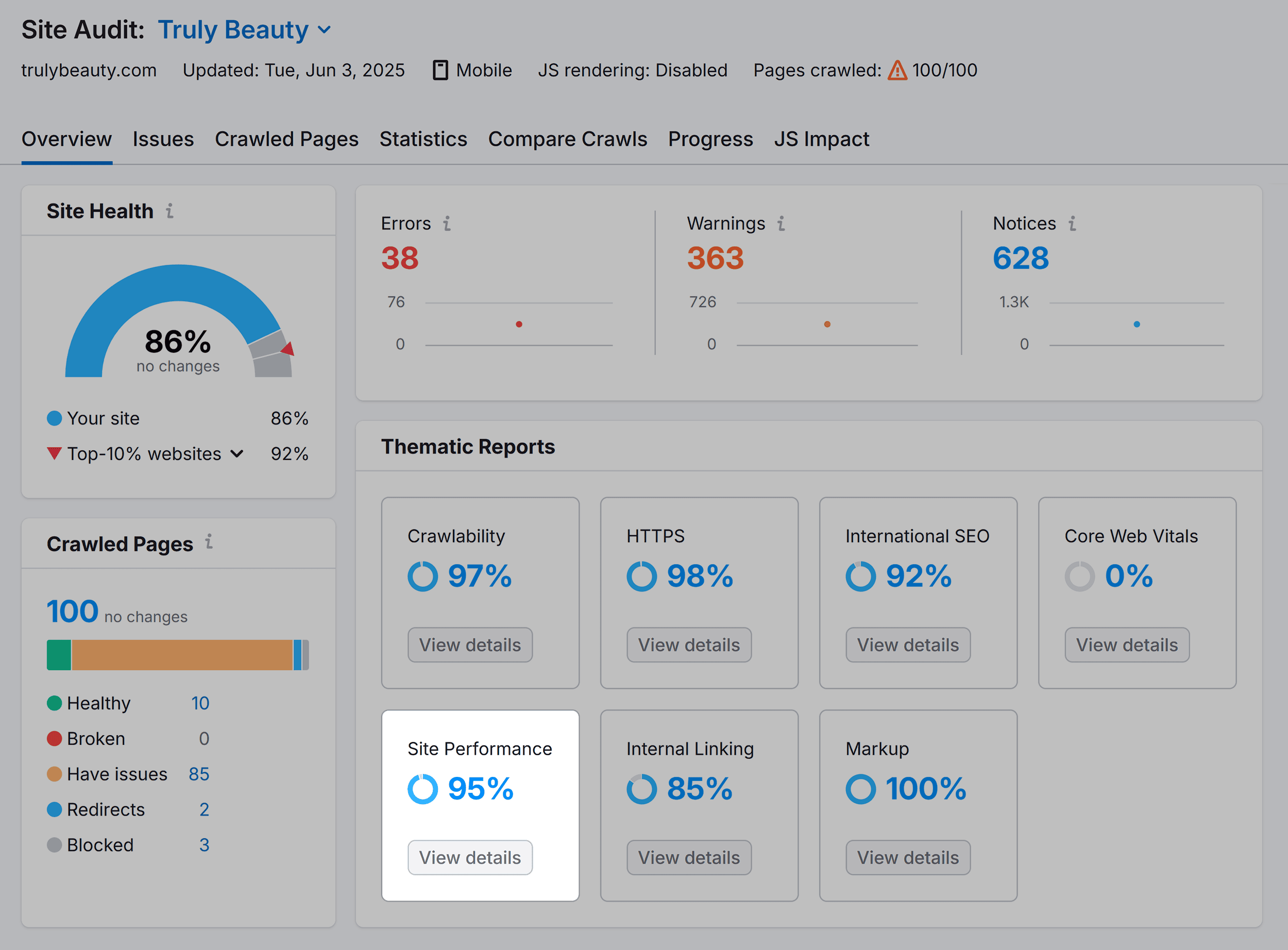
Here, you’ll see the average load speed of your site.
Truly Beauty has an average page load speed of 0.31 seconds, which is outstanding.

You’ll also learn if Site Audit detected any issues with your site, categorized by priority:
- Errors: Highest priority
- Warnings: Medium priority
- Notices: Lowest priority
Click “Learn more” for details on how to fix each issue.

Once you’ve addressed the issues, re-run the audit.
You’ll likely see improved site speed and performance (if you’ve correctly fixed the issues).
These technical improvements will strengthen your search experience optimization efforts.
And improve the experience for your users.
Further reading: Technical SEO: The Ultimate Guide
Add Trust Elements
Trust elements give users the confidence to take action, whether that’s making a purchase, booking a demo, or signing up.
Add them anywhere users evaluate options or make decisions.
Including product pages, landing pages, checkout screens, pricing pages, and even comparison blog posts.
Trust elements include:
- Star ratings or review counts
- Customer testimonials
- Author bios with credentials
- Security badges or payment icons
- User-generated content, like photos or quotes
For example, Truly Beauty shows a variety of trust elements on its product pages.
Like ratings, reviews, and customer-submitted photos.
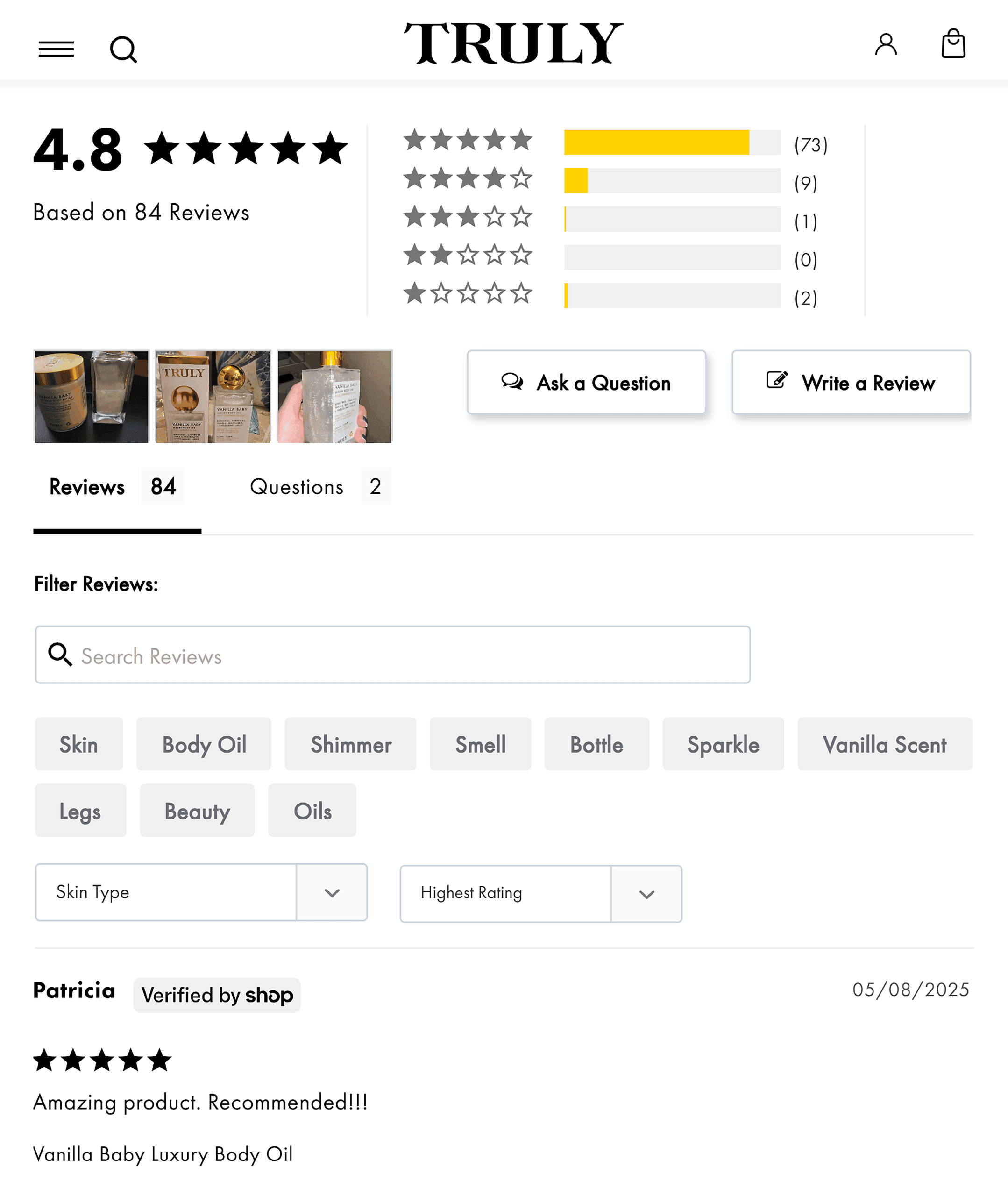
This creates a compelling social proof ecosystem that reduces purchase anxiety and enhances your brand perception.
Clean Up Structure and Layout
Messy layouts confuse users and slow them down.
In contrast, a clean and consistent structure makes your page easier to read, navigate, and act on.
Take a look at how formatting impacts readability on mobile:
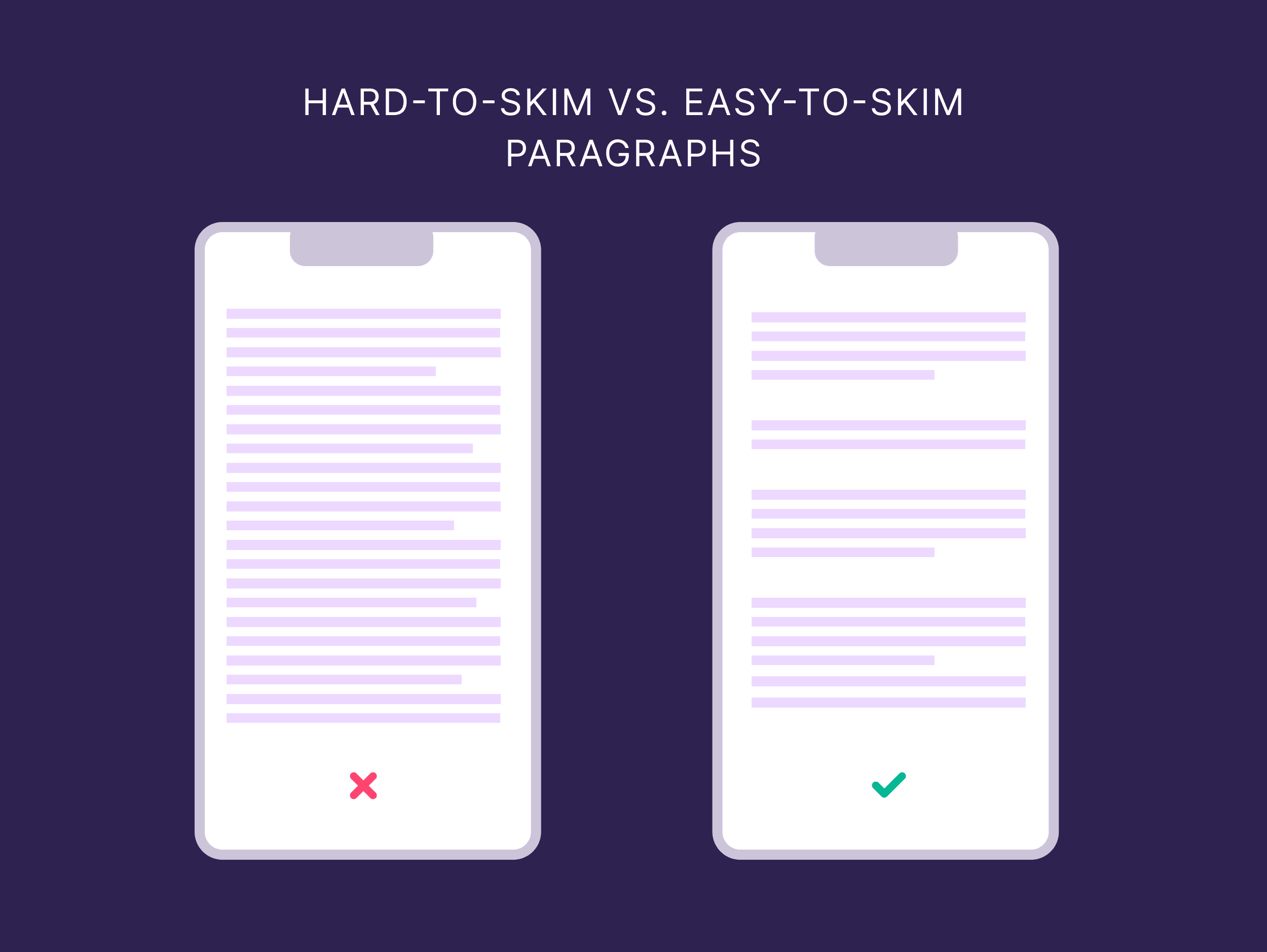
Which one do you think is more readable?
Shorter paragraphs and clear spacing make content easier to scan and understand.
Here’s how to improve your site’s structure and layout:
- Break up long paragraphs into shorter chunks
- Use clear, descriptive headings to guide the flow
- Keep visual design consistent: fonts, spacing, and colors
- Make key elements like CTAs, pricing, or product features easy to spot
For example, this Truly Beauty blog post does some things well.
Including scannable headings, bullet lists, and plenty of white space.

But they could increase the font size to make the content easier to read and skim.
Further reading: 9 Ecommerce Website Optimization Tactics [Expert Insights]
Step 6: Strengthen Your Presence Across Discovery Channels
Some of the most important search moments happen off your website.
In this step, you’ll focus on optimizing how you appear on social media sites, niche forums, and more.
Optimize Your Profiles
Your profile should instantly tell visitors who you are and why they matter to you.
So, review your bio, visuals, and links on every priority platform.
Each one should reflect your brand clearly and feel native to how people use that platform.
Truly Beauty’s Instagram bio is short and clear. But there’s room for improvement.
It doesn’t highlight what sets the brand apart, including a strong hook or call to action.
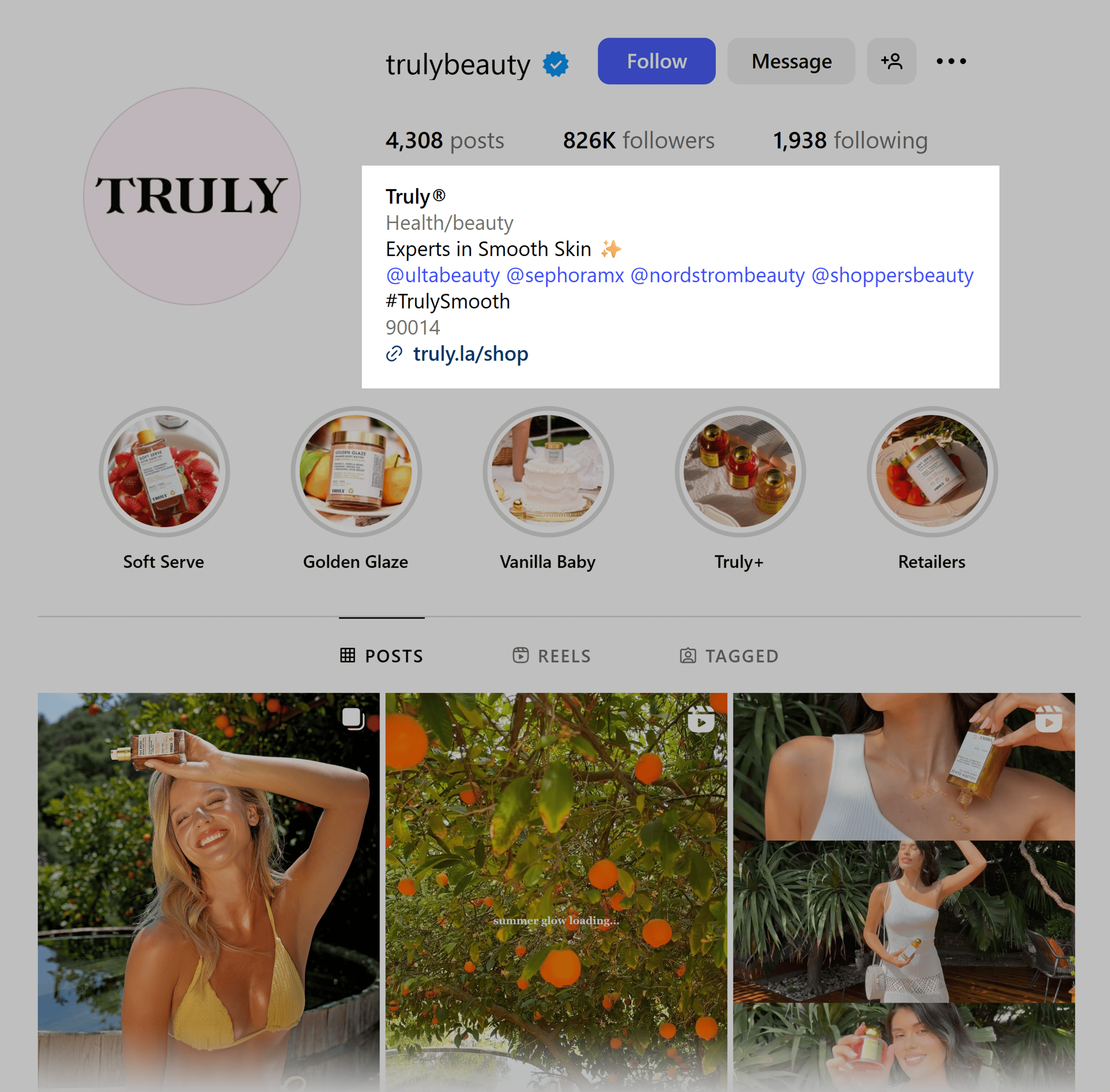
They also don’t have pinned posts.
And their Highlight covers aren’t clear or consistent with their brand visuals.
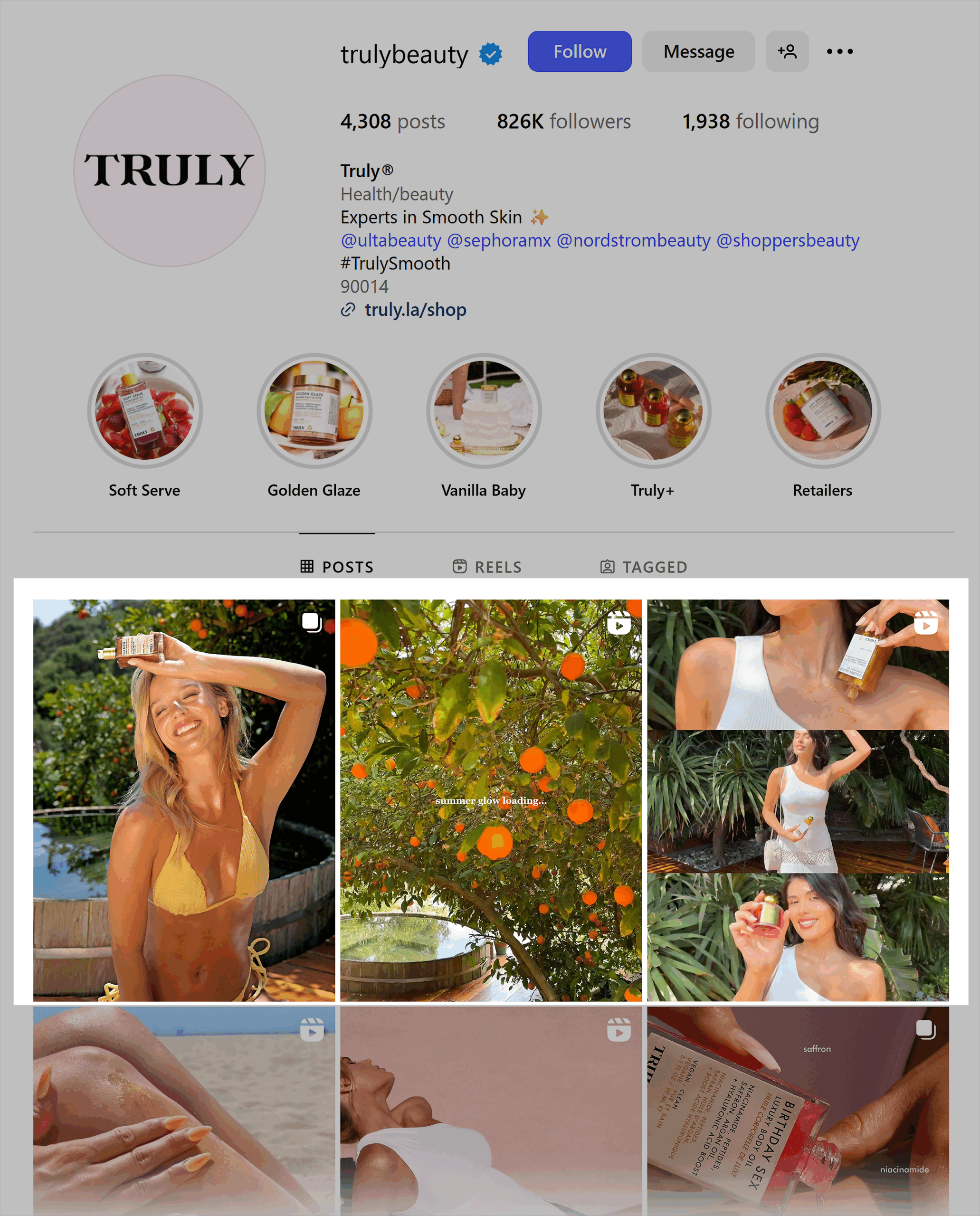
Conversely, makeup brand Too Faced does a great job here.
Their Instagram bio is short but expressive:

Their Instagram Highlights are organized by category — from new product drops to event looks.
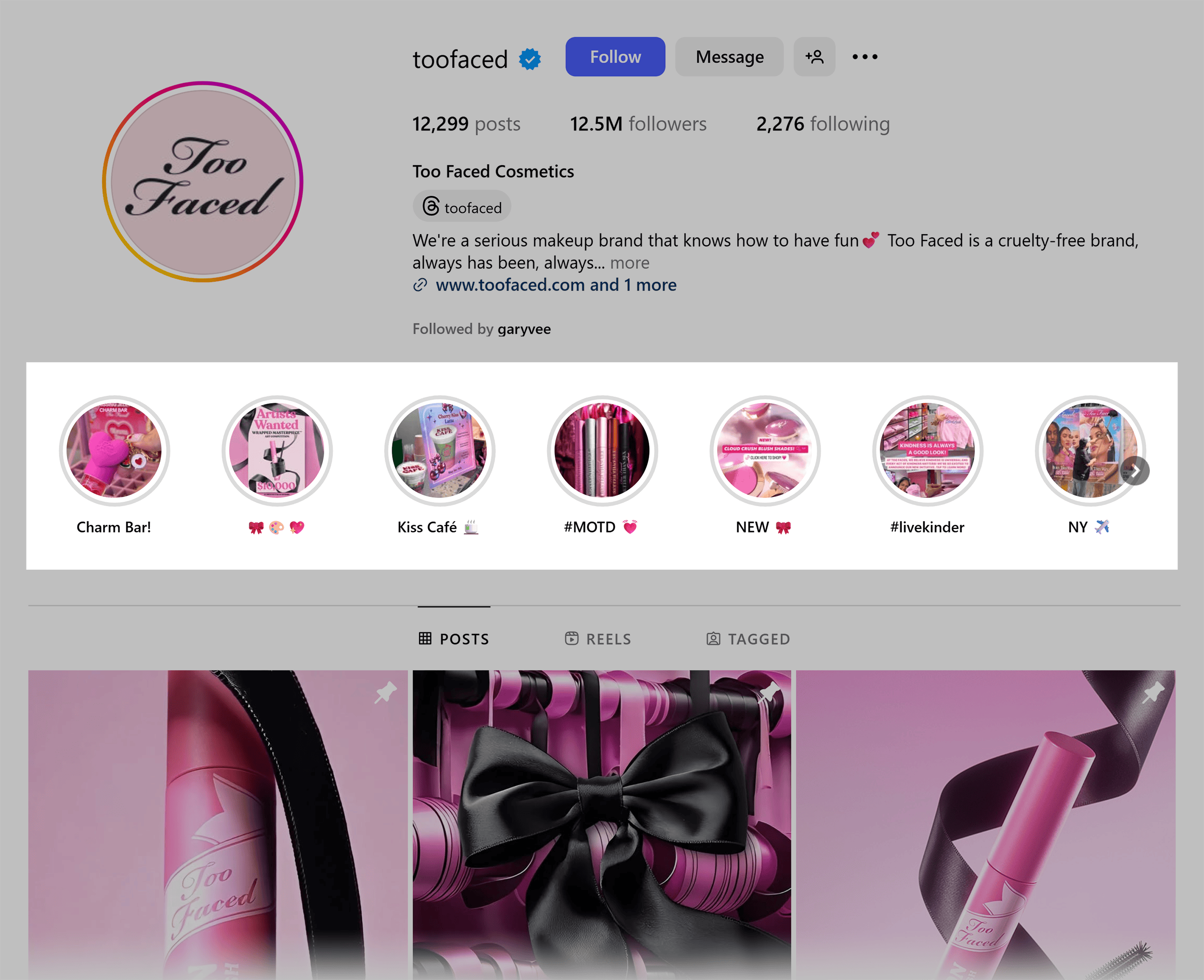
They even include multiple links and a “Shop” button to drive action directly from the page.
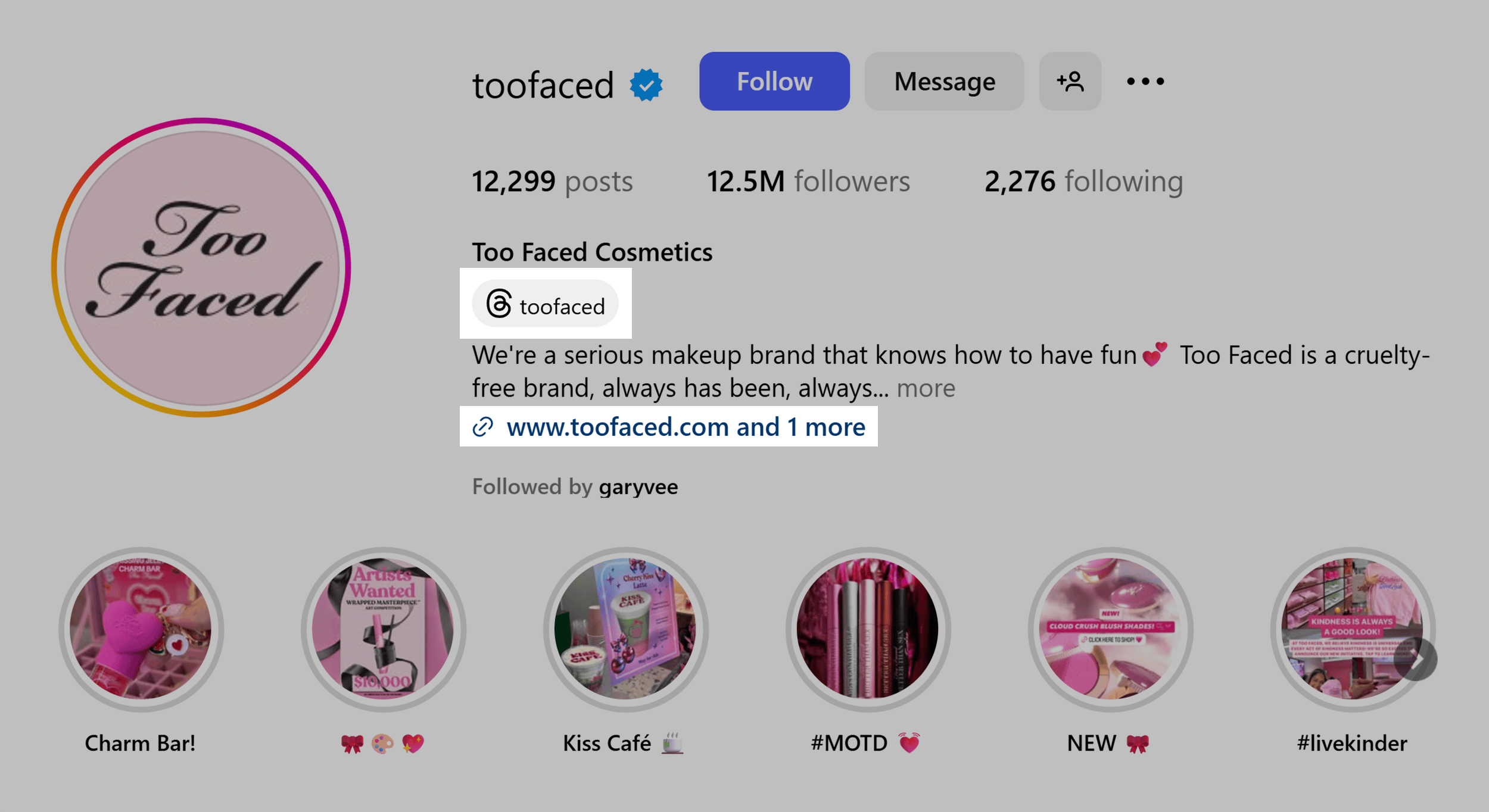
On TikTok, Too Faced takes a different but equally strategic approach.
The brand uses playlists to categorize videos by product type.
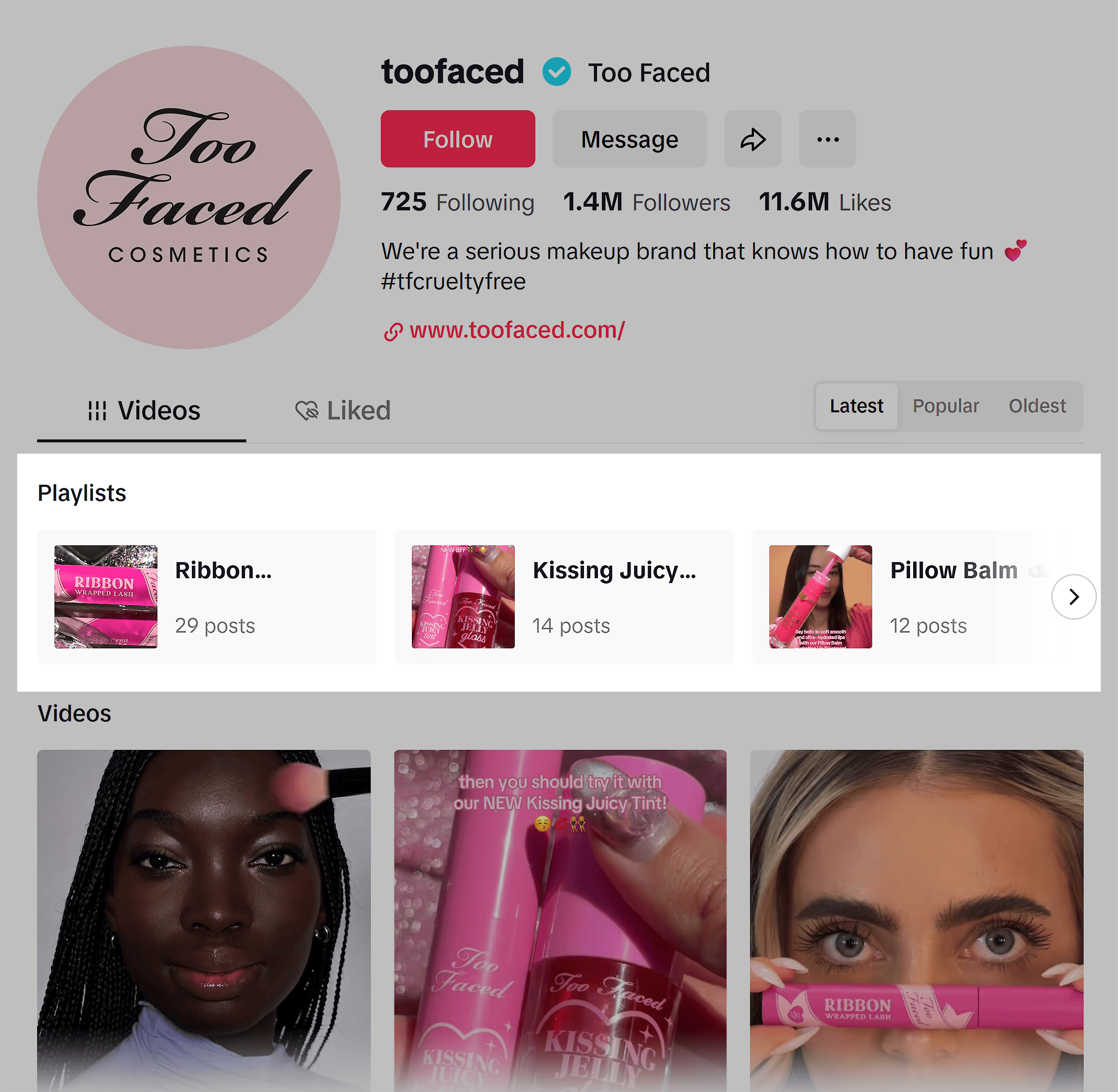
And the pinned posts showcase high-performing videos with bold thumbnails and direct product demos.
Which is perfect for TikTok’s users, who prefer short, visual content before buying.
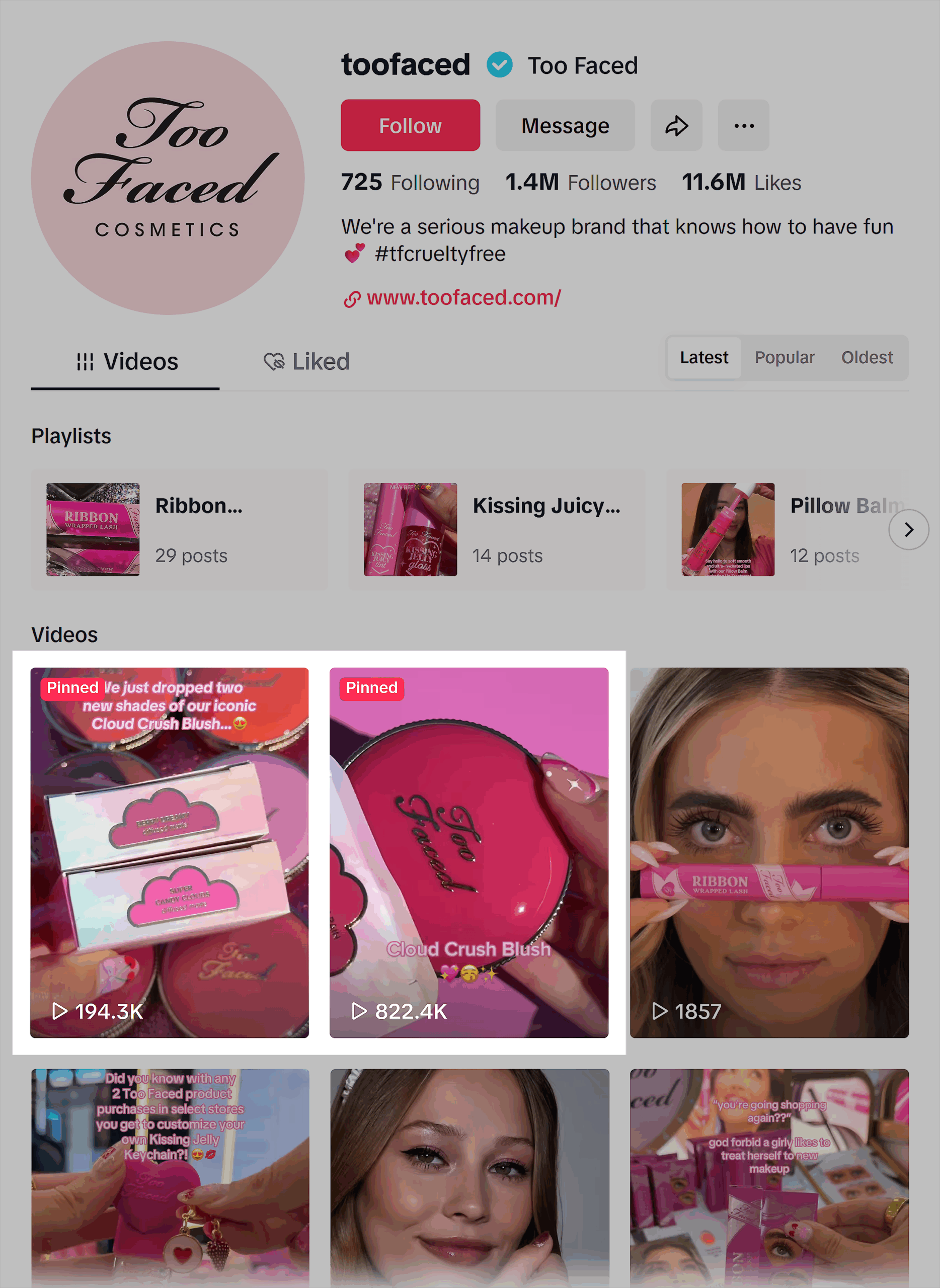
Engage with Followers
Getting questions or comments on your social media posts?
This is a great opportunity to engage with your audience and offer helpful information.
Truly Beauty engages with users in the comments.
And responds to feedback, answers questions, and shows appreciation for its customers.

This kind of interaction builds trust and shows followers there’s a real team behind the brand.
Collaborate with Trusted Voices
Want a fast way to build credibility?
Partner with the creators your audience already trusts.
Find the voices influencing those spaces — and team up.
Truly Beauty works with influencers to promote products.

But when it comes to creator partnerships, makeup brand Morphe takes this strategy to another level.
They regularly collaborate with beauty creators to launch products, demo looks, and drive buzz.
Like this influencer collab that got them over 2.4K likes and 60+ comments:
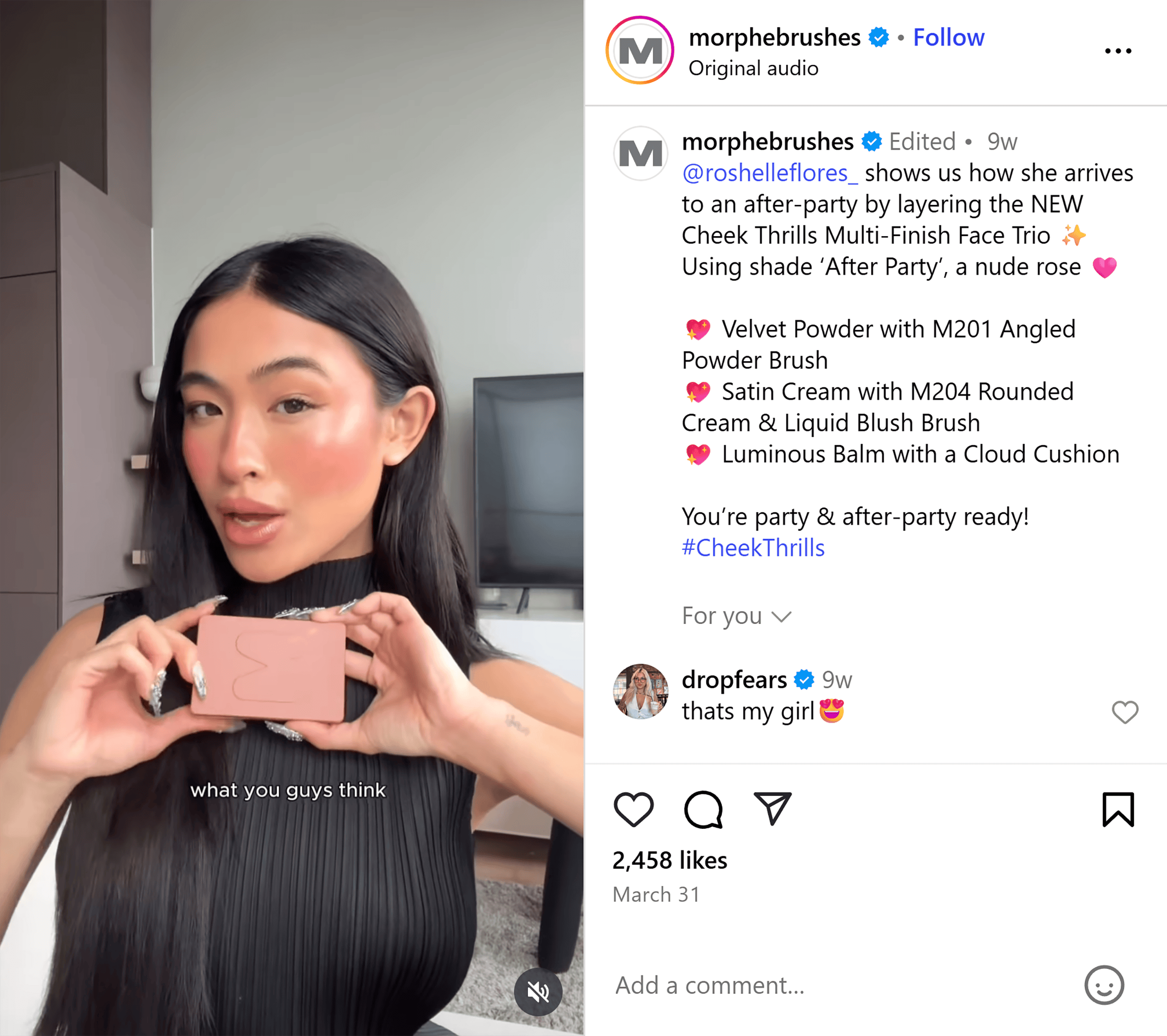
Step 7: Monitor, Measure, and Optimize
You can’t optimize what you don’t track.
To improve your performance over time, you need visibility into how people discover and engage with your content, products, or services.
And what happens next.
Start by identifying which metrics you want to prioritize.
Here are some examples:
- Google: Rankings, click-through rate (CTR), impressions
- YouTube: Watch time, average view duration
- TikTok: Engagement rate, profile clicks
- Amazon: Conversion rate, product search visibility
- Instagram: Post engagement rate, profile visits, bio link clicks
- Reddit: Upvotes, comment volume, brand mentions
- Your website: Goal conversion rate, bounce rate, scroll depth, time on page
Then, choose the right tools to track these metrics.
Google Analytics 4 and Google Search Console provide essential data to track your SEO performance and user experience improvements.
For instance, on GA4, you can navigate to “Reports” > “Acquisition” > “Traffic Acquisition” to view your site’s traffic sources.

YouTube Studio, TikTok Insights, and Instagram Insights provide platform-specific data.
Like views, watch time, and subscribers.
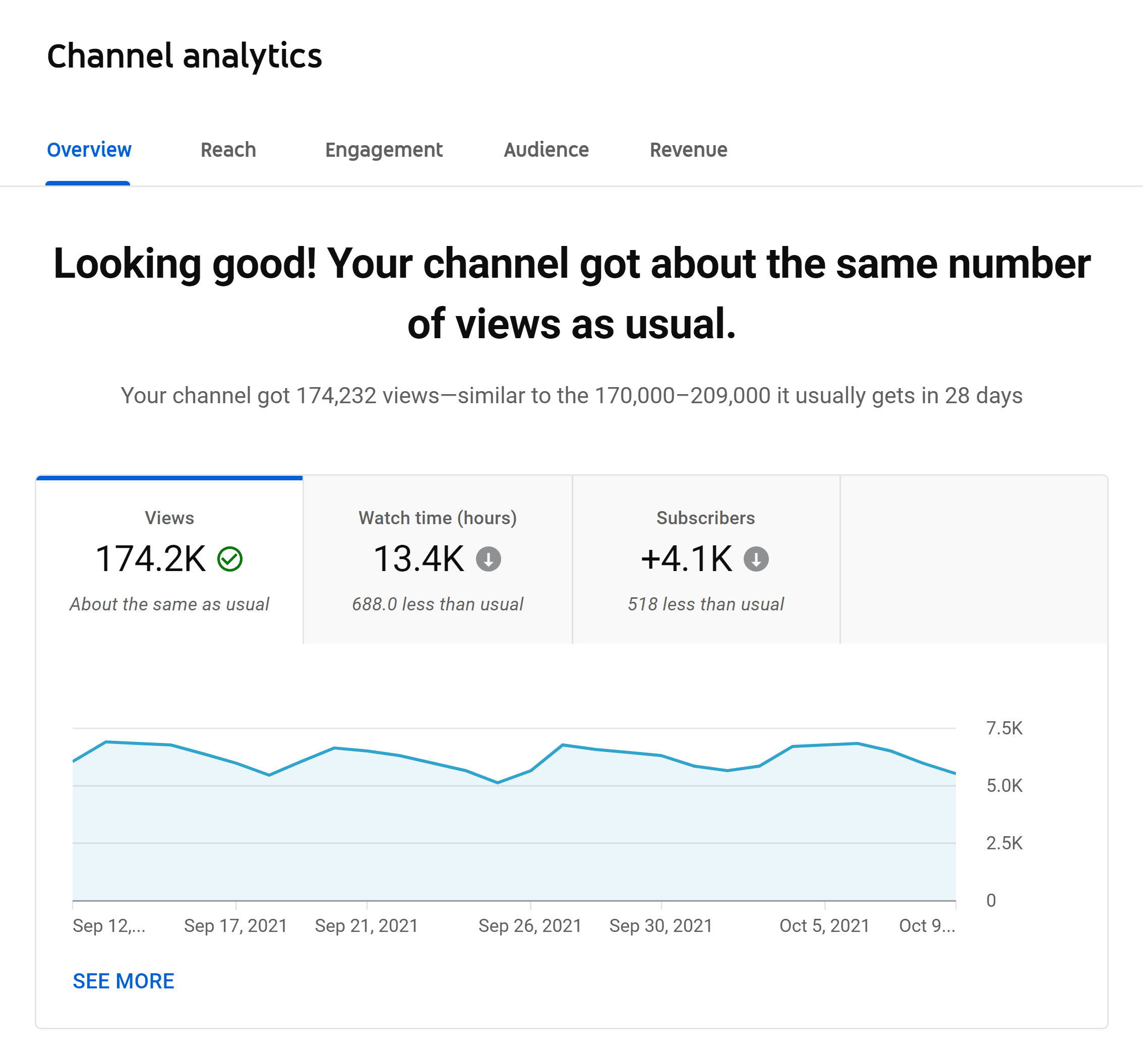
Use what you learn to improve weak content and fix UX issues.
You may also want to add specialized tools for social media and website performance.
Like heat mapping, session recording, and conversion analysis.
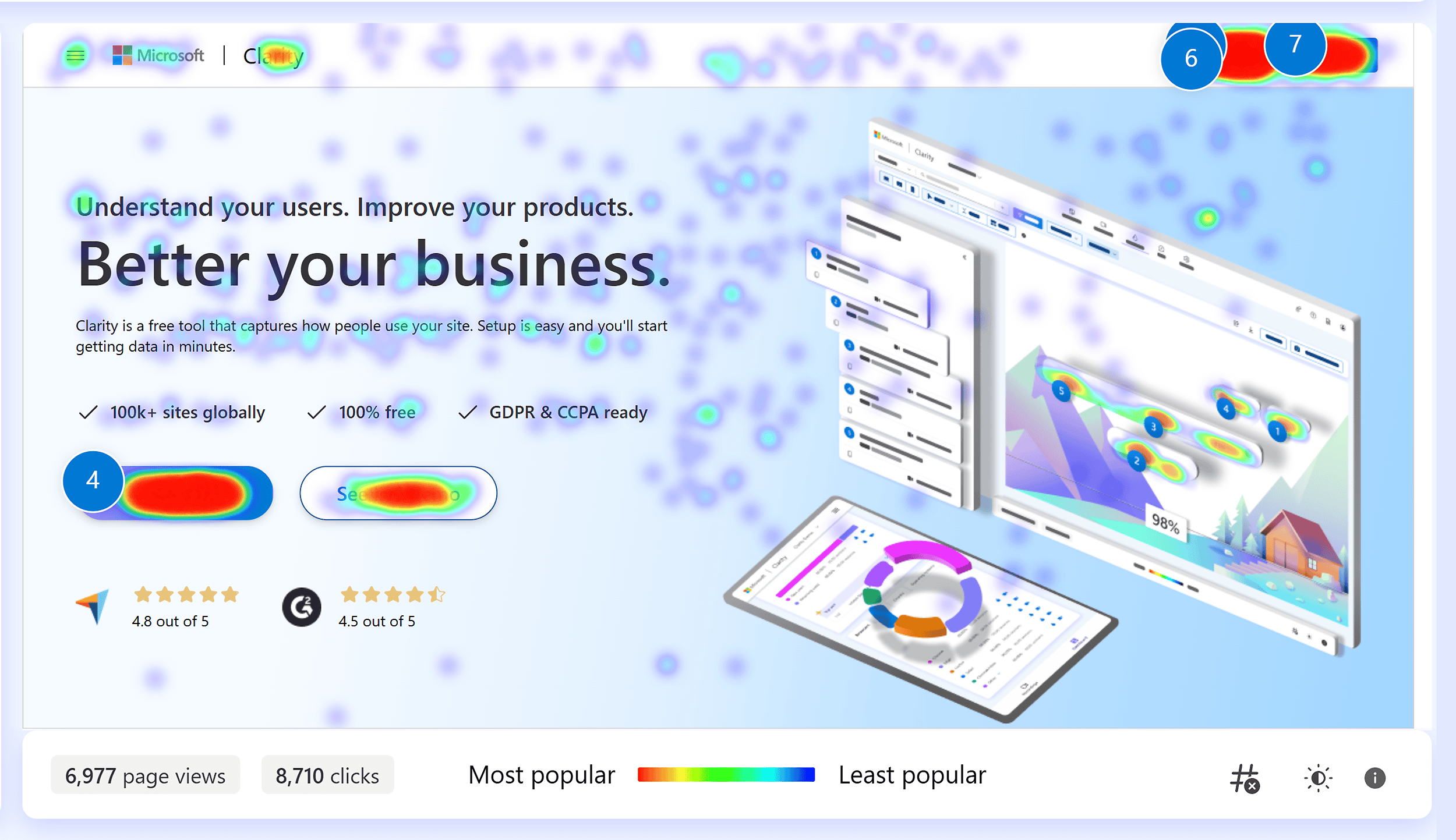
Ready to Improve Every Search Touchpoint?
The search journey in 2025 isn’t linear anymore. And your strategy shouldn’t be either.
The brands that win won’t be the ones with the most blog posts.
They’ll be the ones who show up with the right content, in the right format, on the right platform — at the moment it matters.
To make that happen, you need a strategy built for how people actually search.
Use our free checklist to turn what you’ve learned into a clear, actionable strategy.
Next up: Check out our definitive guide to on-page SEO, a crucial component of any effective SEO strategy.
The post Search Everywhere Optimization Guide (+ Free Checklist) appeared first on Backlinko.







